Video Library
On this page, you can view all videos from the health care professionals, hand/arm transplant recipients, and people with limb loss featured on this website. While many of the videos can be found on other pages of the website, several are only available in the links below.
Videos of Health Care Professionals
Joe Butkus, UE Transplant Occupational Therapist
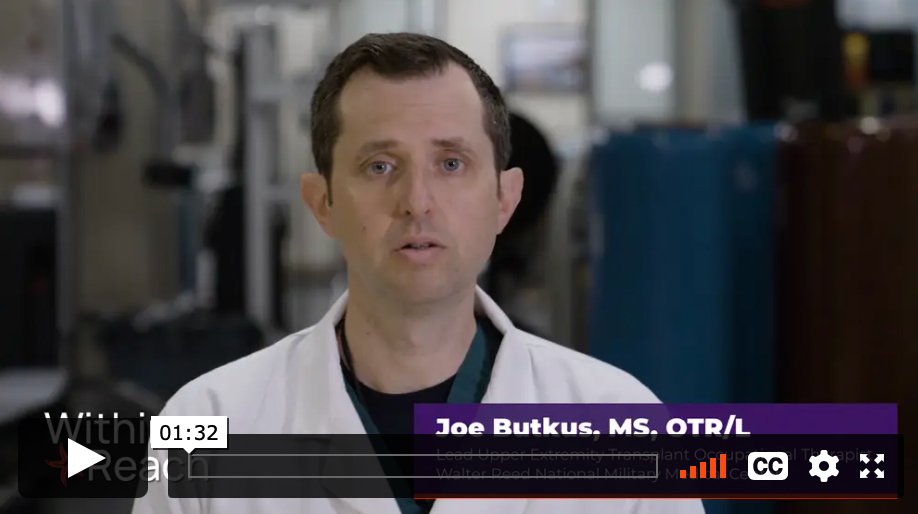
Joe Butkus, UE Transplant Occupational Therapist, discusses alternatives to hand/arm transplantation.
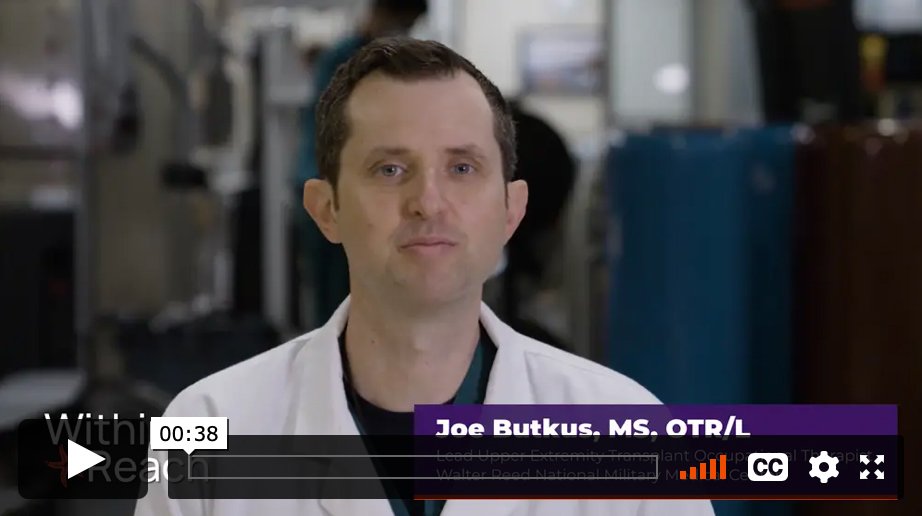
Joe Butkus, UE Transplant Occupational Therapist, talks about factors to consider when making a decision about hand/arm transplantation.
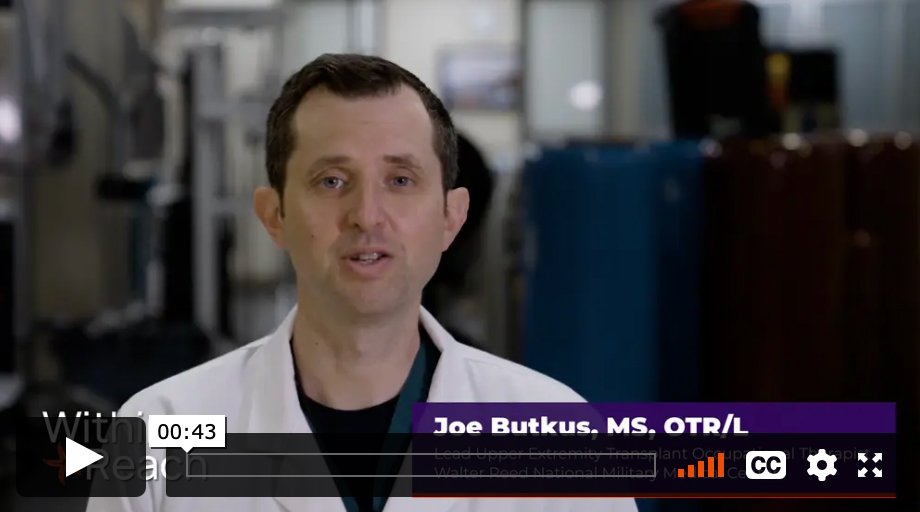
Joe Butkus, UE Transplant Occupational Therapist, talks about potential negative effects of hand/arm transplantation.
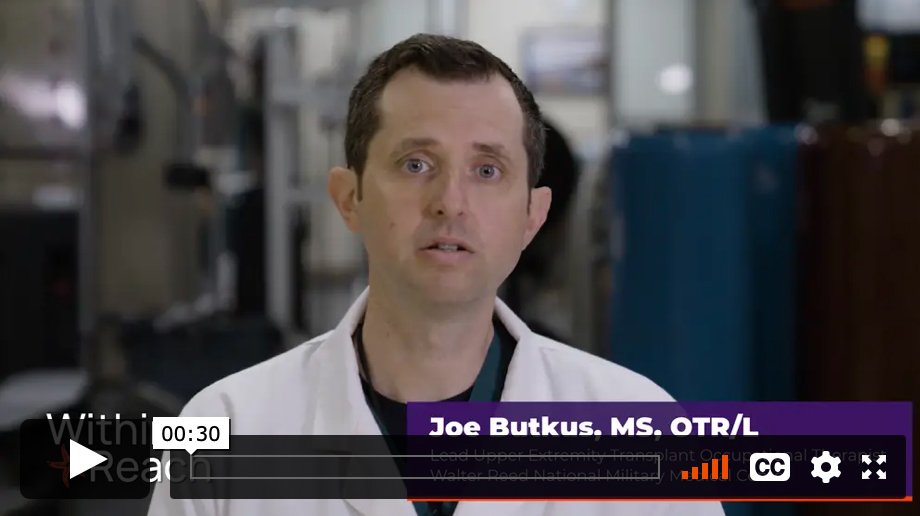
Joe Butkus, UE Transplant Occupational Therapist, talks about social limitations of hand/arm transplantation.

Joe Butkus, UE Transplant Occupational Therapist, describes the rehabilitation process for hand/arm transplantation.
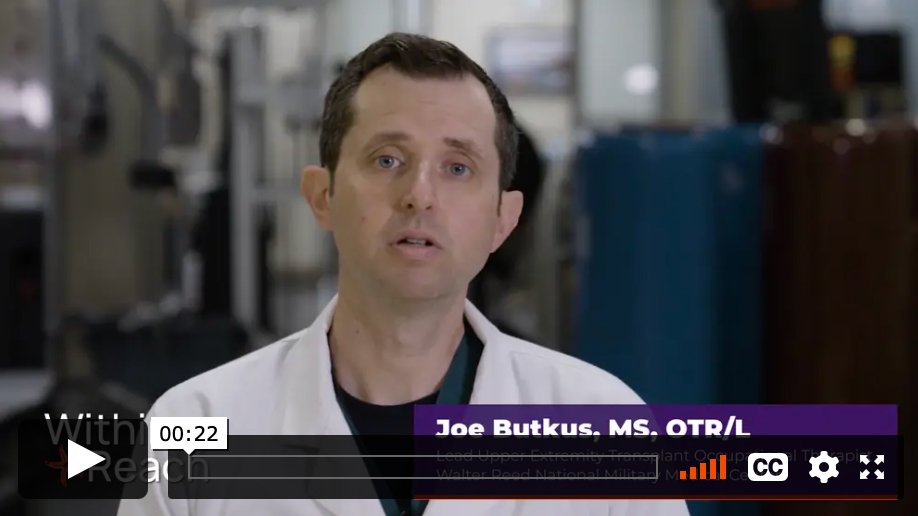
Joe Butkus, UE Transplant Occupational Therapist, talks about goals of military personnel when seeking treatment after amputation.
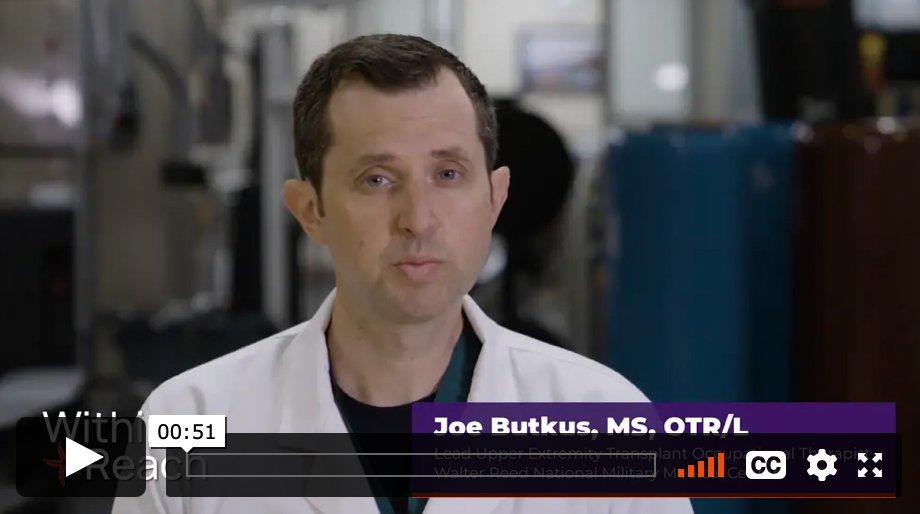
Joe Butkus, UE Transplant Occupational Therapist, talks about what patients look forward to after transplantation.
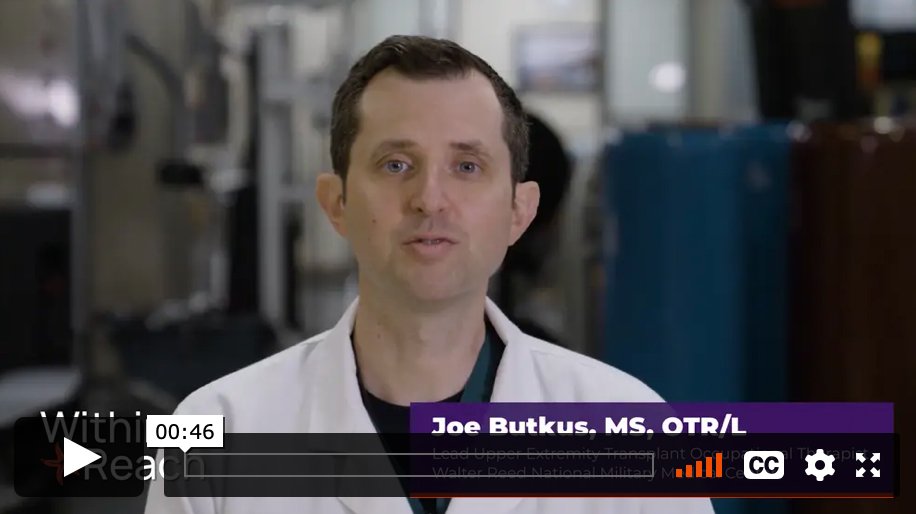
Joe Butkus, UE Transplant Occupational Therapist, describes a patient's rehabilitation process after transplantation.
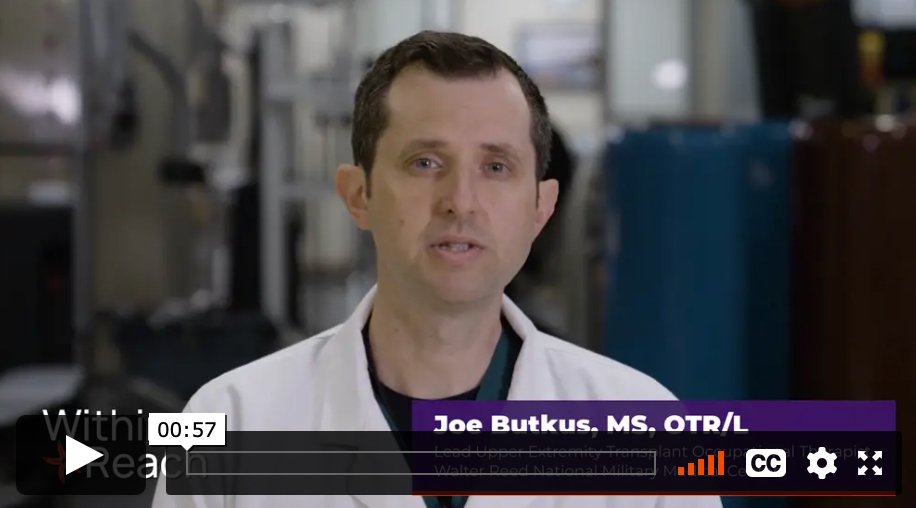
Joe Butkus, UE Transplant Occupational Therapist, compares treatment options for upper limb loss.
Angie Duckworth, Transplant Social Worker
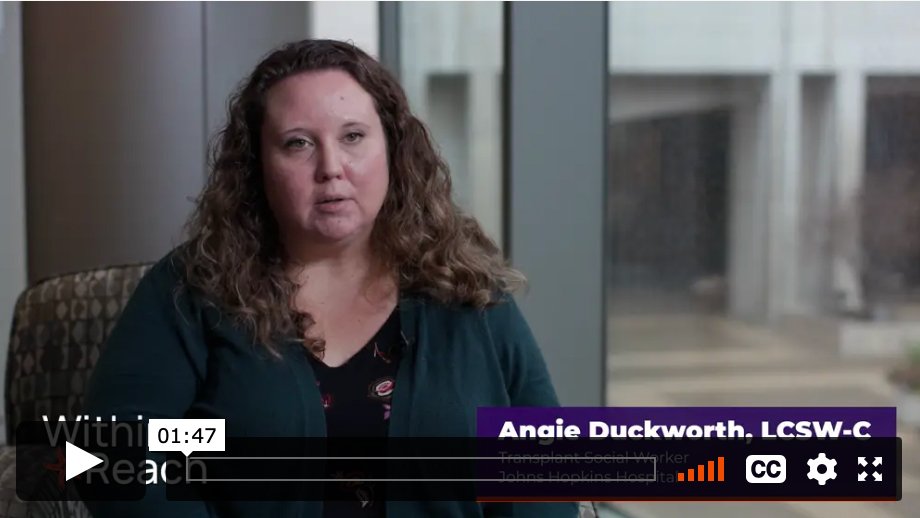
Angie Duckworth, Transplant Social Worker, talks through important factors when considering hand/arm transplantation.
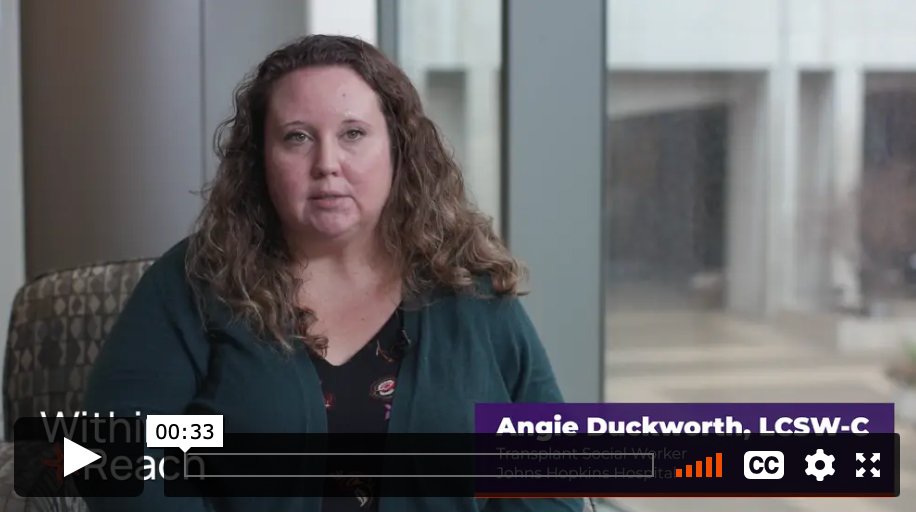
Angie Duckworth, Transplant Social Worker, talks about what is discussed during the evaluation process for hand/arm transplant.

Angie Duckworth, Transplant Social Worker, talks about the risk of re-amputation.
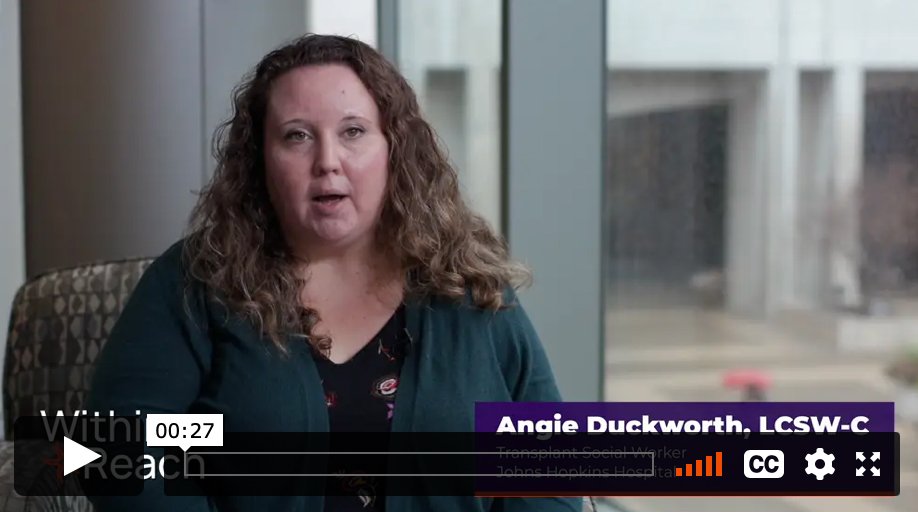
Angie Duckworth, Transplant Social Worker, talks about how candidates need to be prepared for life after getting a hand/arm transplant.
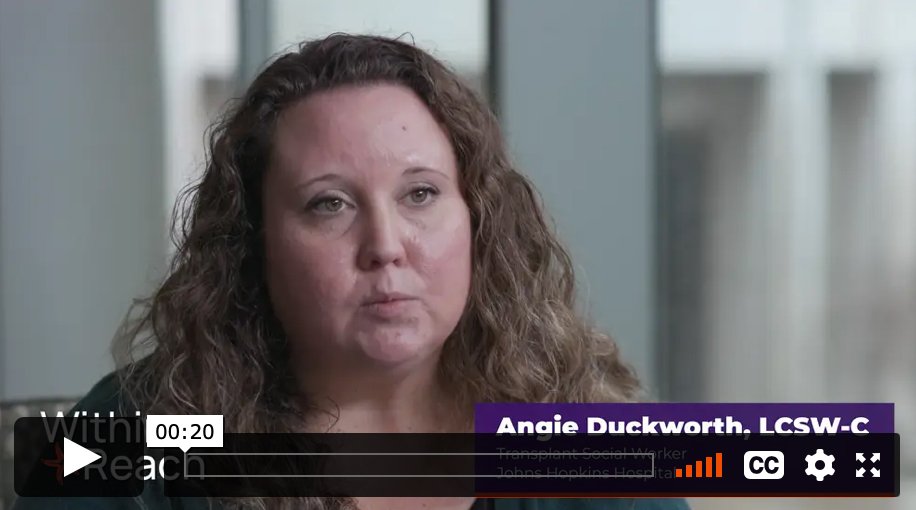
Angie Duckworth, Transplant Social Worker, talks about potential financial drawbacks of hand/arm transplantation for the patient and their caregivers.
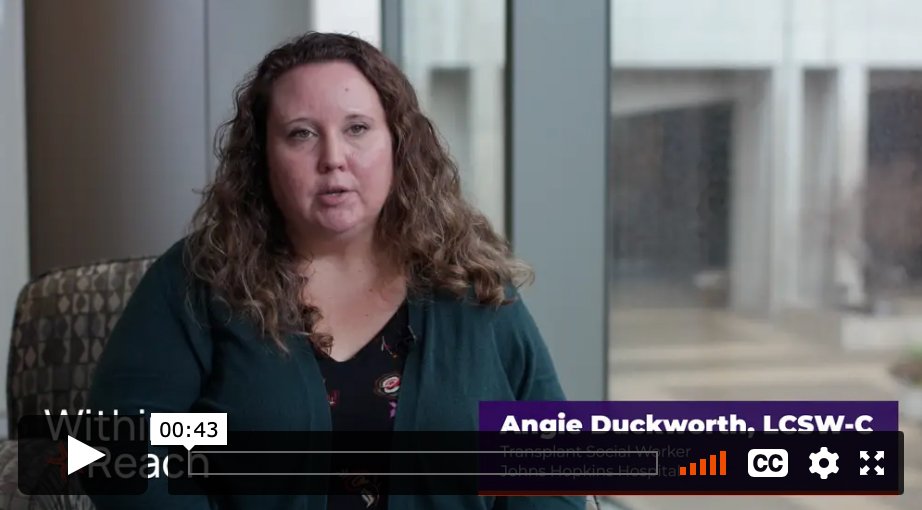
Angie Duckworth, Transplant Social Worker, talks about how hand/arm transplantation can help some people with limb loss regain hand function.
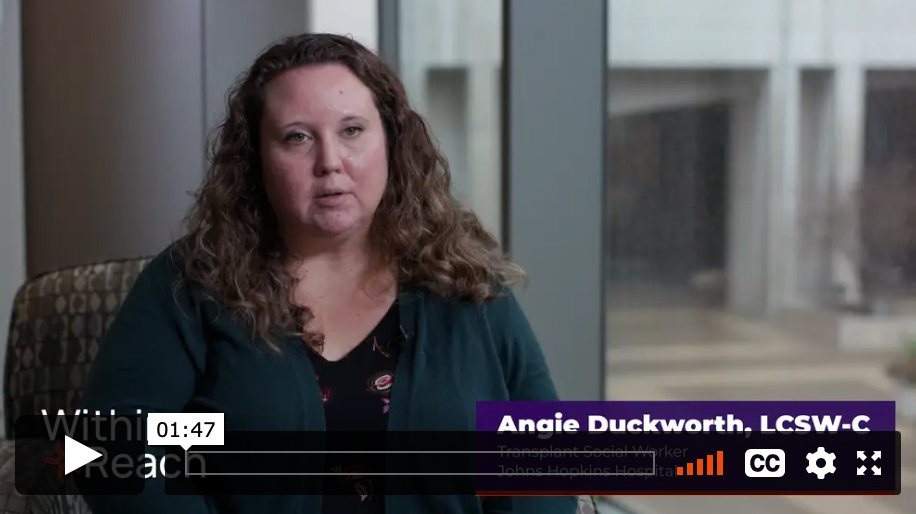
Angie Duckworth, Transplant Social Worker, describes the patient information and characteristics the transplant team reviews during the evaluation process.
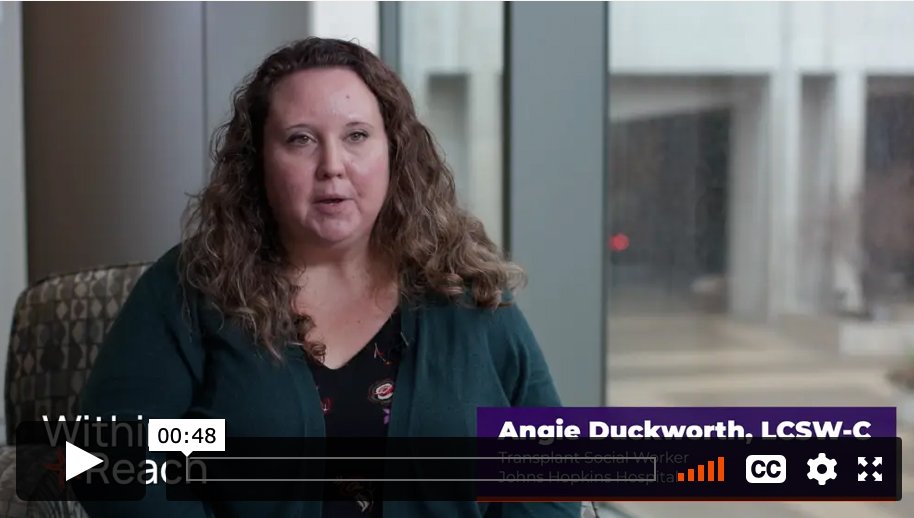
Angie Duckworth, Transplant Social Worker, talks about mental and emotional recovery for hand/arm transplant recipients.
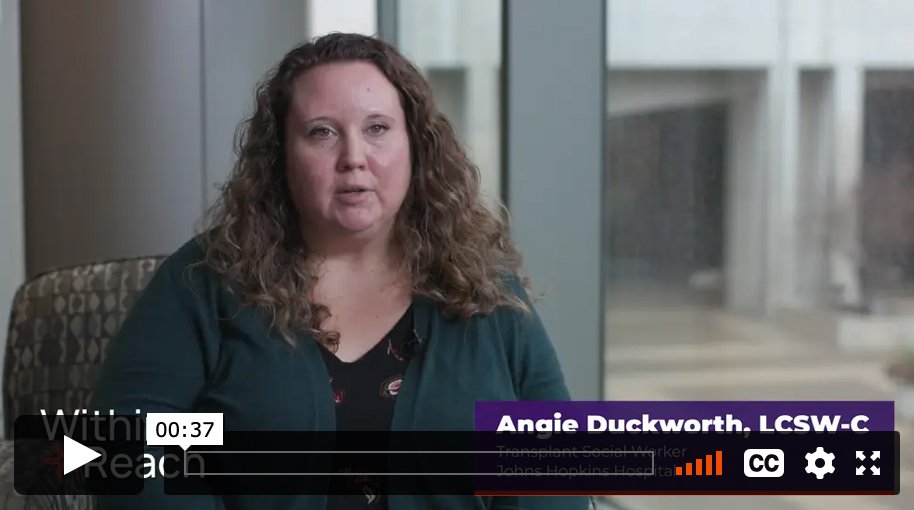
Angie Duckworth, Transplant Social Worker, talks about hand/arm transplantation as an optional treatment.
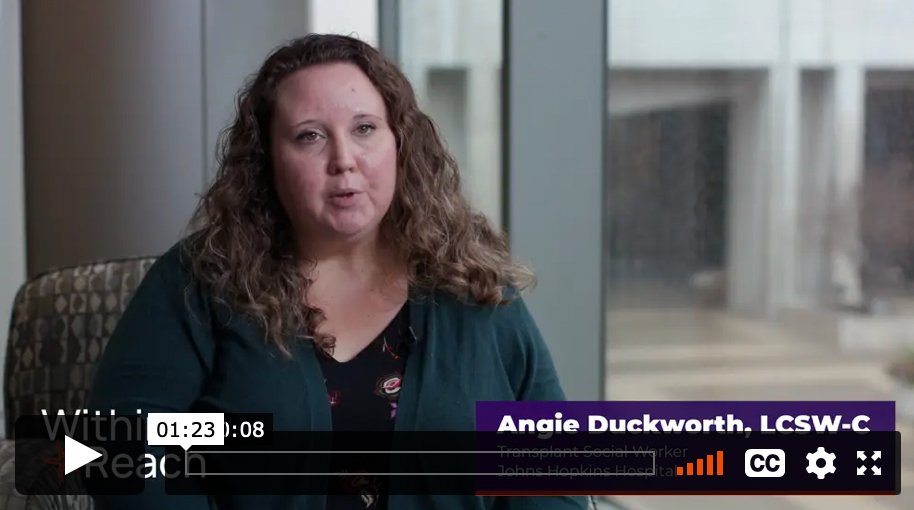
Angie Duckworth, Transplant Social Worker, talks about the need to consider time off work and other financial expenses when pursuing a hand/arm transplant.
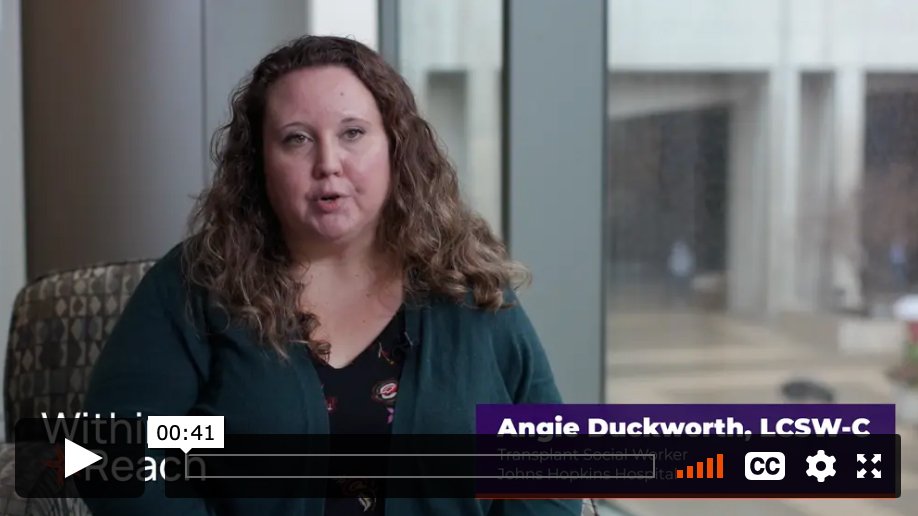
Angie Duckworth, Transplant Social Worker, talks about how hand/arm transplantation may help recipients feel "whole".

Angie Duckworth, Transplant Social Worker, talks about the importance of mental health care in the hand/arm transplant evaluation process.
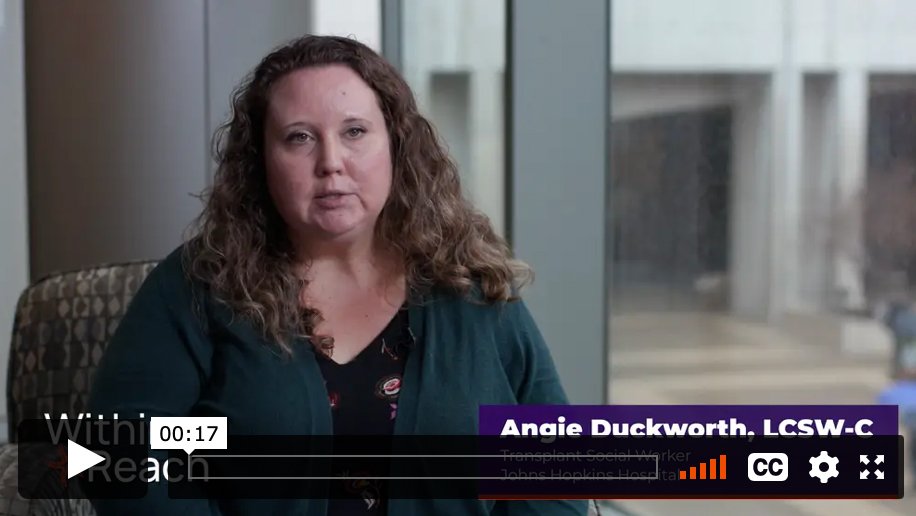
Angie Duckworth, Transplant Social Worker, talks about how patients stay in close contact with their transplant team after surgery.

Angie Duckworth, Transplant Social Worker, talks about the importance of having good social support when pursuing a hand/arm transplant.
Dr. Gregory Dumanian, Chief of Plastic Surgery
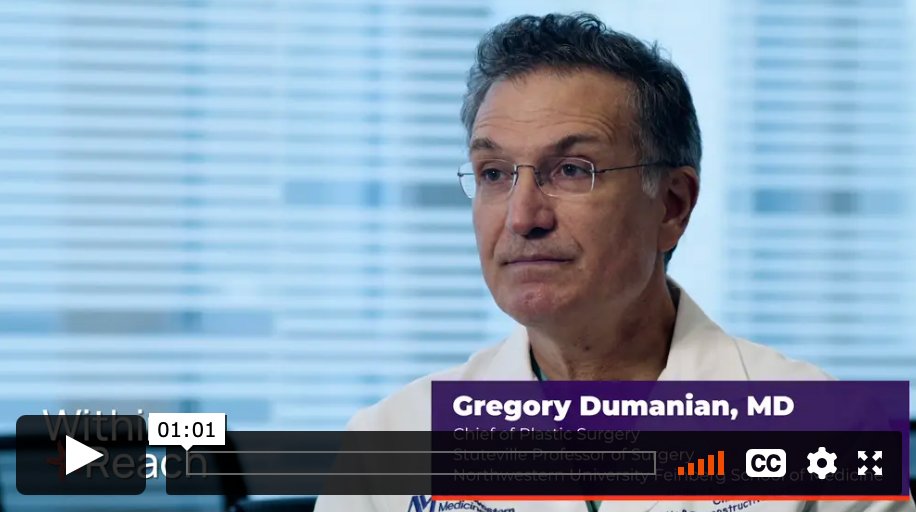
Dr. Dumanian, Chief of Plastic Surgery, talks about sensation from a hand/arm transplant compared to a prosthetic.
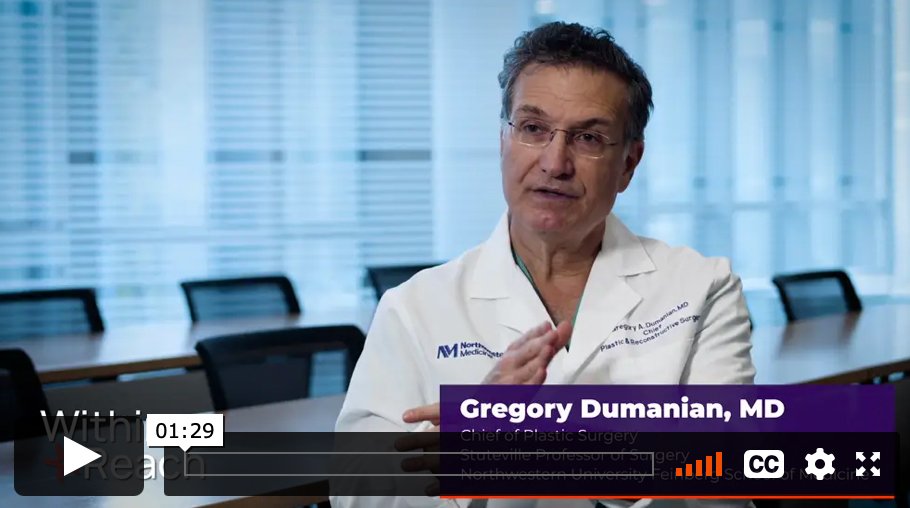
Dr. Dumanian, Chief of Plastic Surgery, explains the differences between distal and high amputation transplantations.
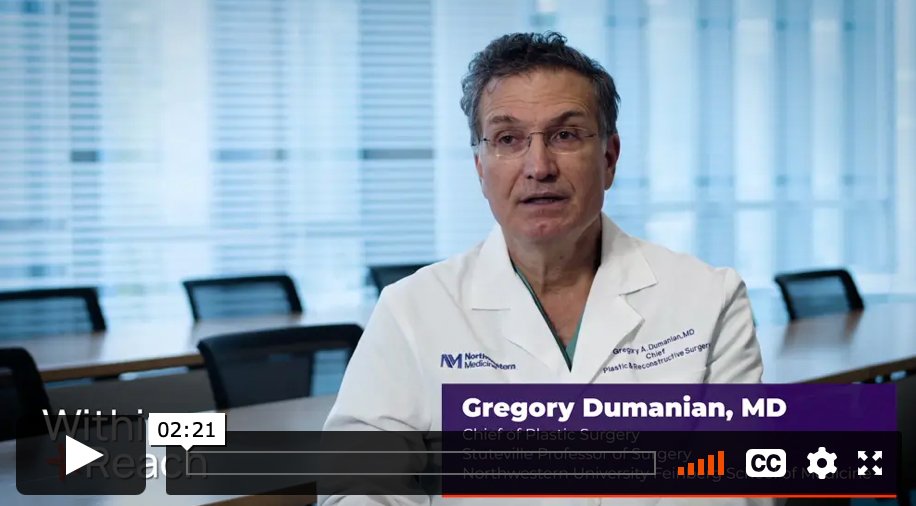
Dr. Dumanian, Chief of Plastic Surgery, discusses who he thinks would make the best candidate for hand/arm transplantation.
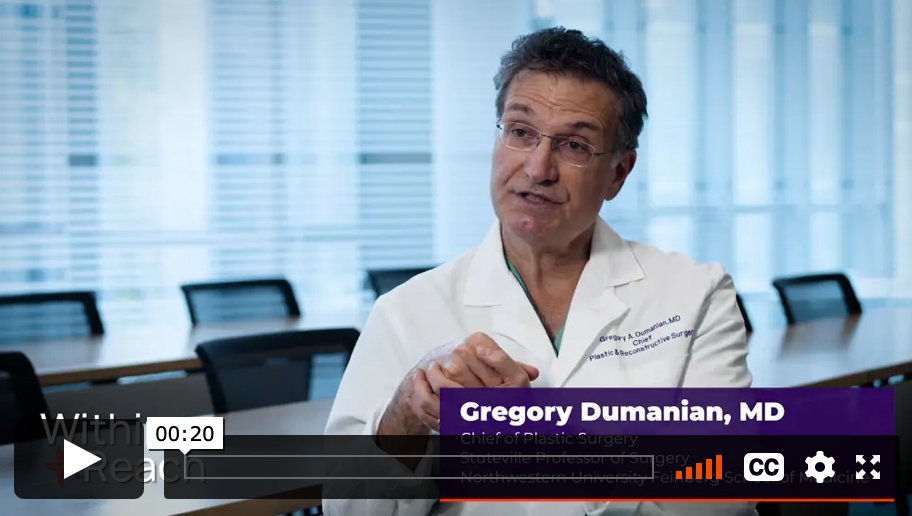
Dr. Dumanian, Chief of Plastic Surgery, describes the potential for scarring from the hand/arm transplant procedure.
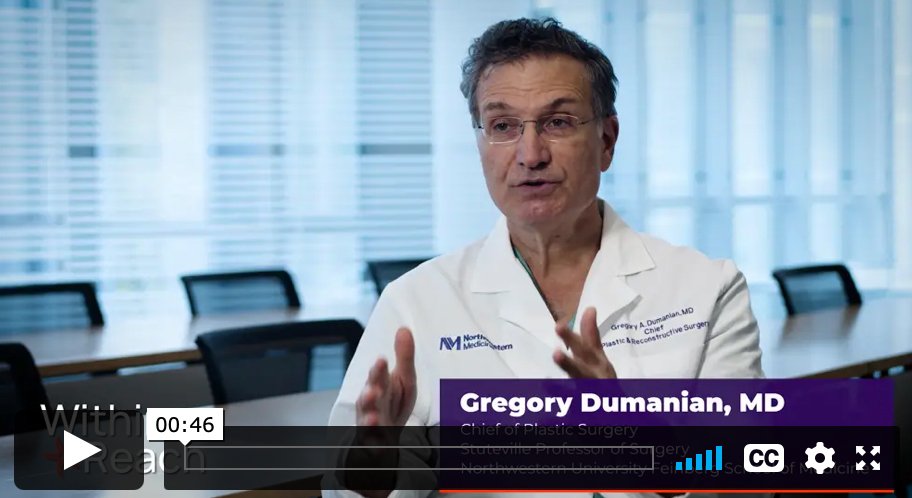
Dr. Dumanian, Chief of Plastic Surgery, describes the risks of taking anti-rejection medicine.
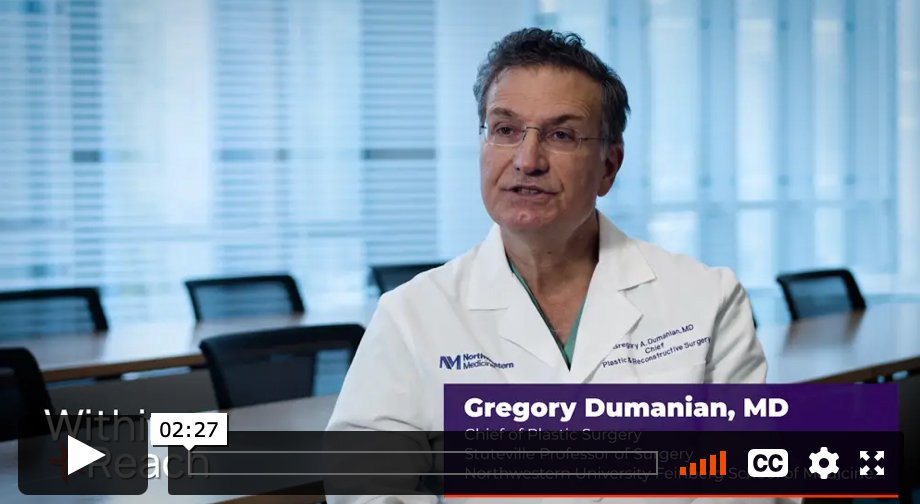
Dr. Dumanian, Chief of Plastic Surgery, describes how the process of someone accepting their limb loss can factor into decision making about treatment options.
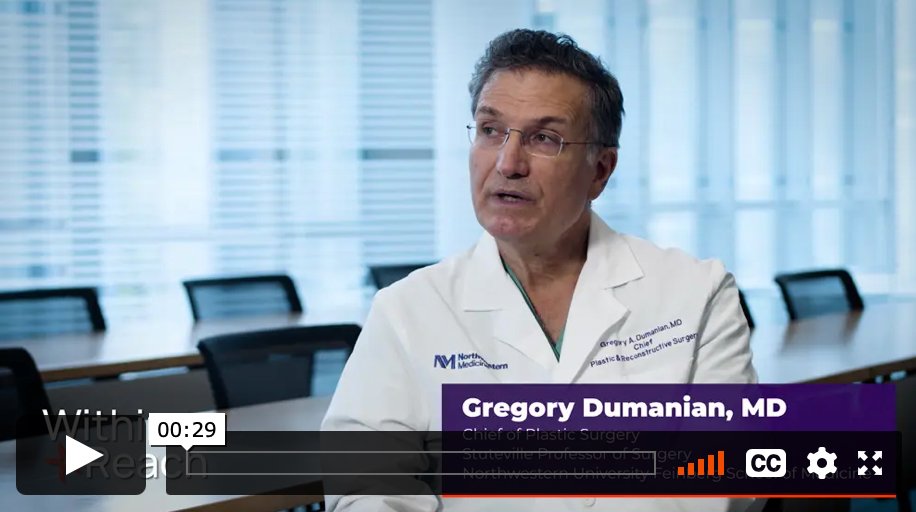
Dr. Dumanian, Chief of Plastic Surgery, talks about the financial commitment that comes with hand/arm transplantation.

Dr. Dumanian, Chief of Plastic Surgery, explains how hand/arm transplantation affects body image.

Dr. Dumanian, Chief of Plastic Surgery, talks about hand/arm transplantation for wounded warriors.
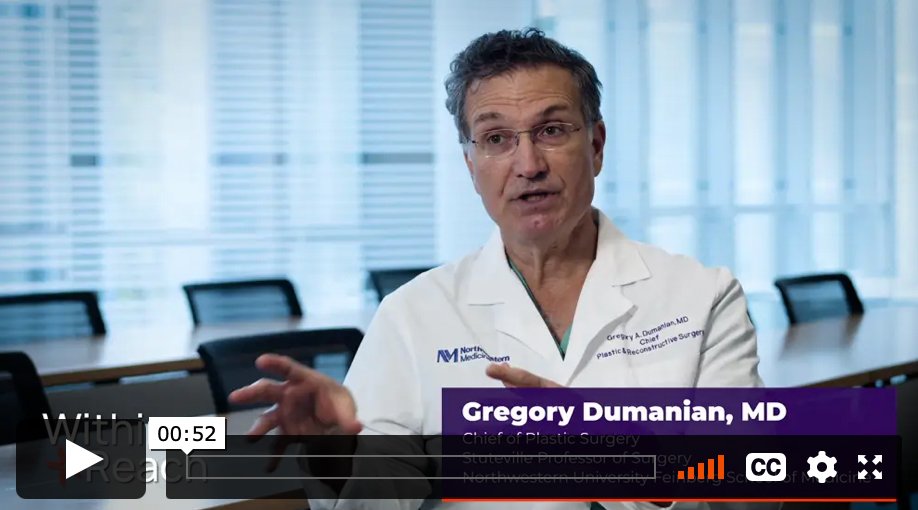
Dr. Dumanian, Chief of Plastic Surgery, talks about the risk of limb rejection.

Dr. Dumanian, Chief of Plastic Surgery, clarifies the difference between acute and chronic rejection.
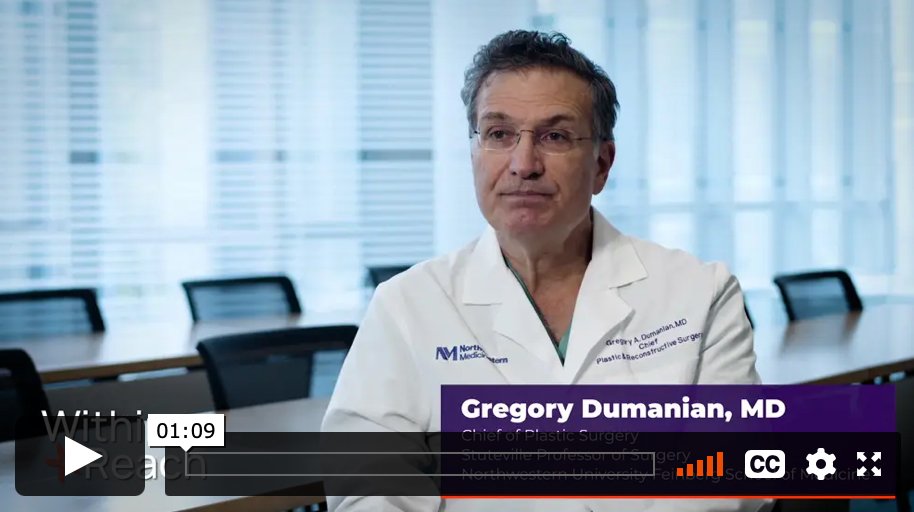
Dr. Dumanian, Chief of Plastic Surgery, describes the commitment necessary for post-operative therapy.
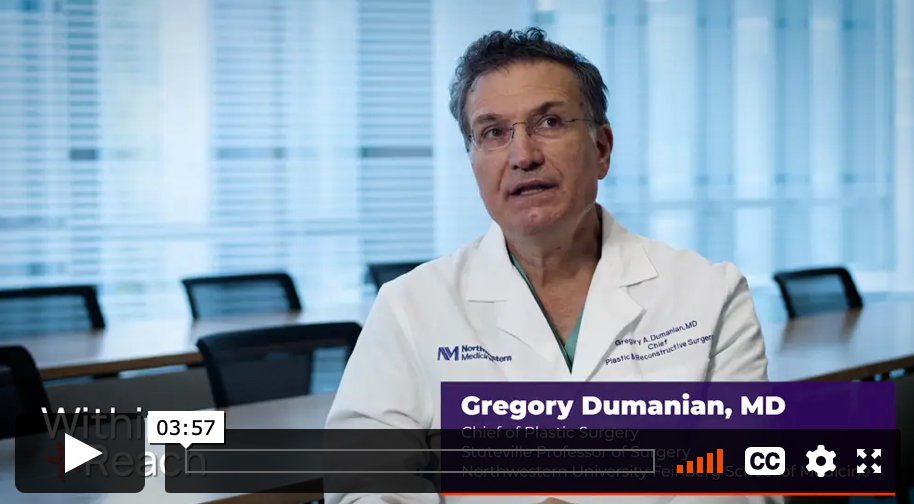
Dr. Dumanian, Chief of Plastic Surgery, discusses the risks and benefits of treatment options for upper limb loss.

Dr. Dumanian, Chief of Plastic Surgery, talks about the overall costs of hand/arm transplantation.
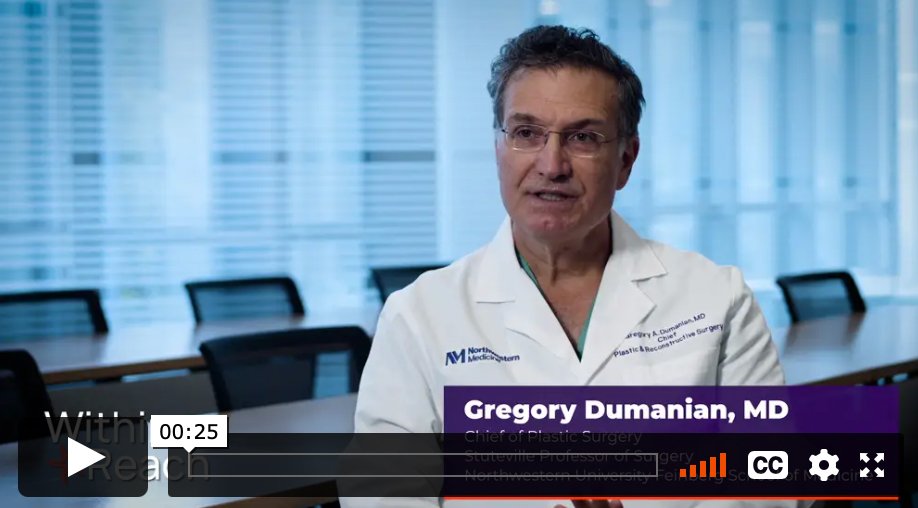
Dr. Dumanian, Chief of Plastic Surgery, gives examples of benefits of hand/arm transplantation.
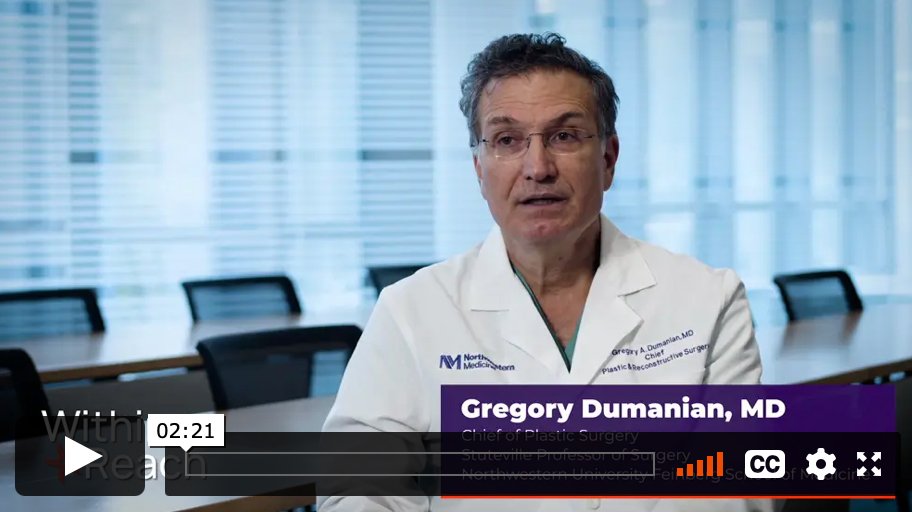
Dr. Dumanian, Chief of Plastic Surgery, discusses who may be the best candidates for hand/arm transplantation.
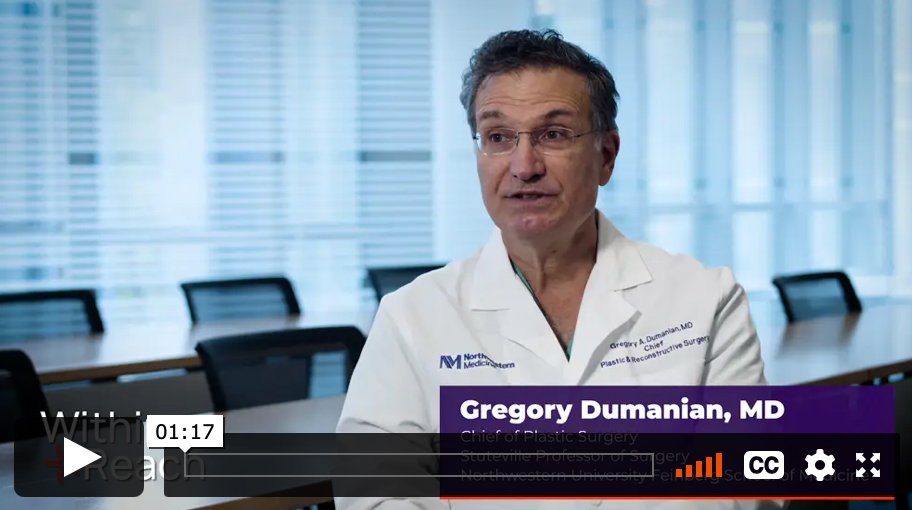
Dr. Dumanian, Chief of Plastic Surgery, talks about the drawbacks and risks of hand/arm transplantation.
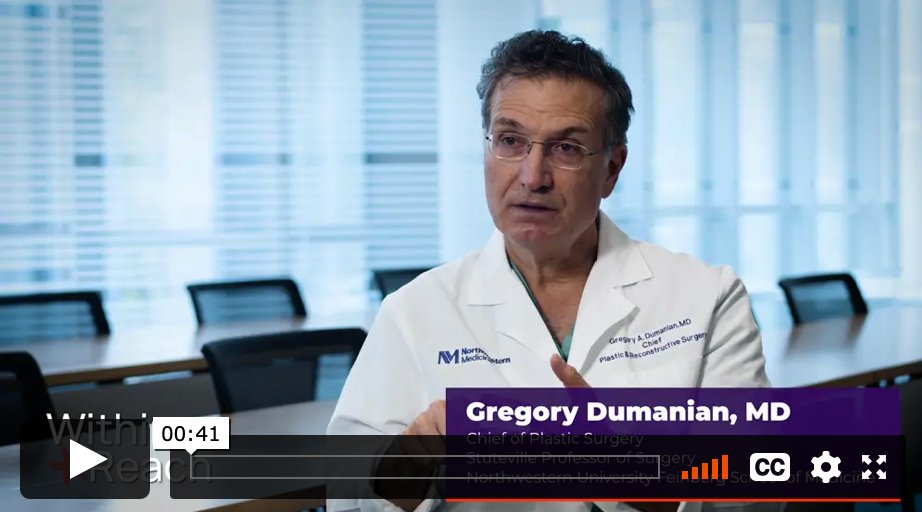
Dr. Dumanian, Chief of Plastic Surgery, talks about why some people with limb loss do not want to take the risk of re-amputation.

Dr. Dumanian, Chief of Plastic Surgery, talks about questions that patients can ask the transplant surgeon about hand/arm transplantation before making a decision.
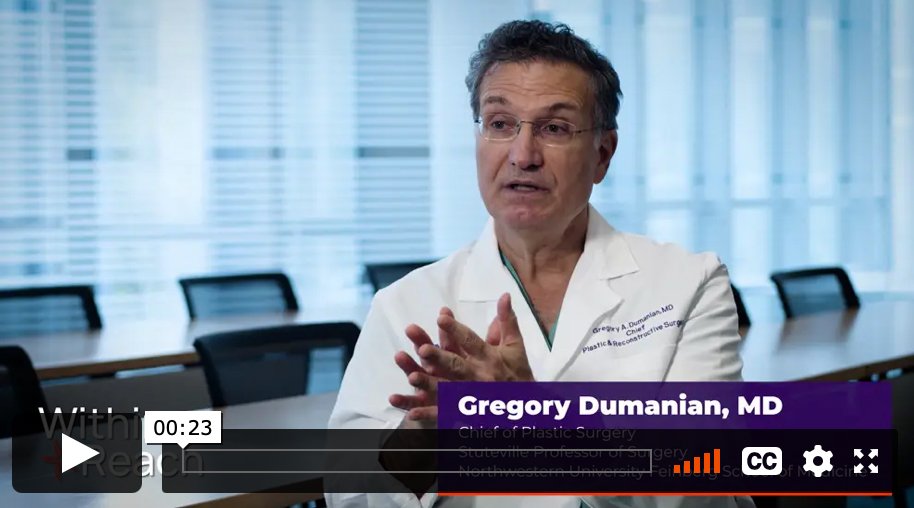
Dr. Dumanian, Chief of Plastic Surgery, talks about how a hand/arm transplant may look.
David Rotter, Prosthetist
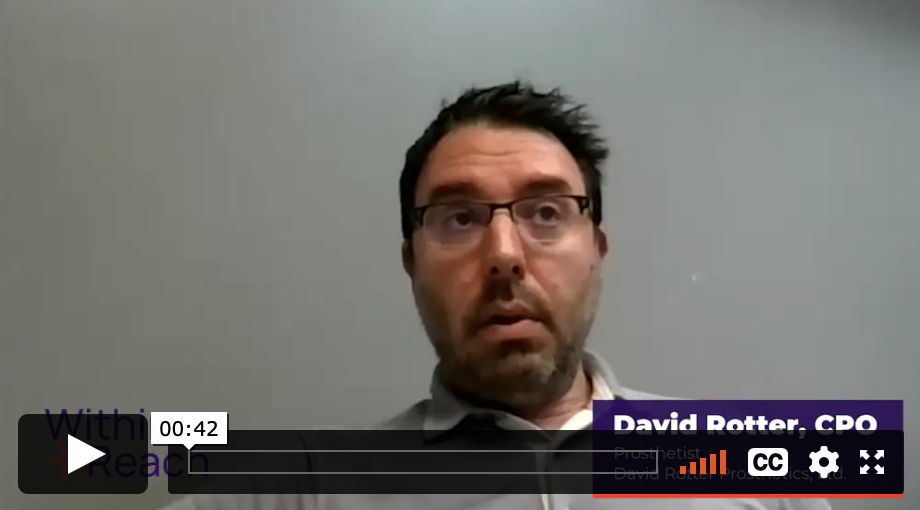
David Rotter, Prosthetist, talks about the characteristics of a good candidate for hand/arm transplantation.

David Rotter, Prosthetist, gives his opinion about the pros and cons of hand/arm transplantation.
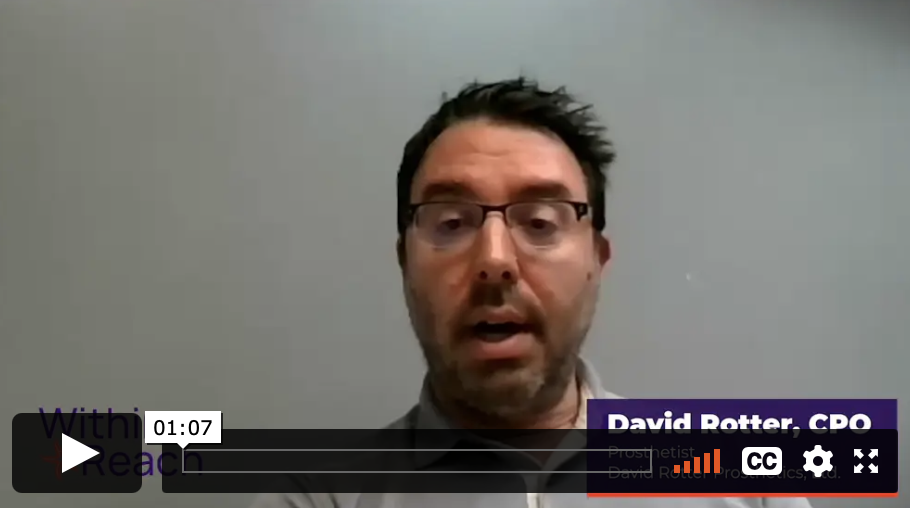
David Rotter, Prosthetist, talks about how people considering a hand/arm transplant should get information from many sources before deciding.
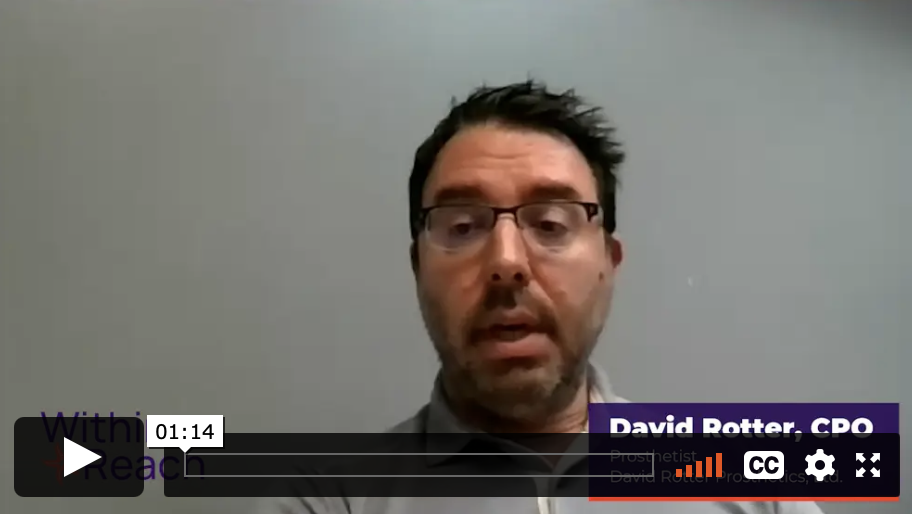
David Rotter, Prosthetist, talks about prosthetic devices and how to address patients' treatment goals.
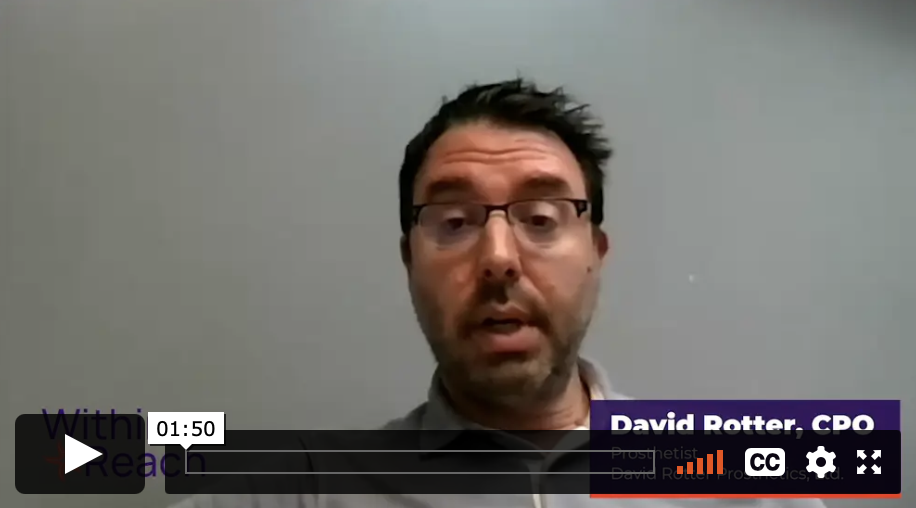
David Rotter, Prosthetist, talks about making treatment decisions based on one’s personal treatment goals.
Dr. Jaimie Shores, Hand/Arm Transplant Surgeon

Dr. Jaimie Shores, Hand/Arm Transplant Surgeon, discusses what makes a good candidate for hand/arm transplantation.
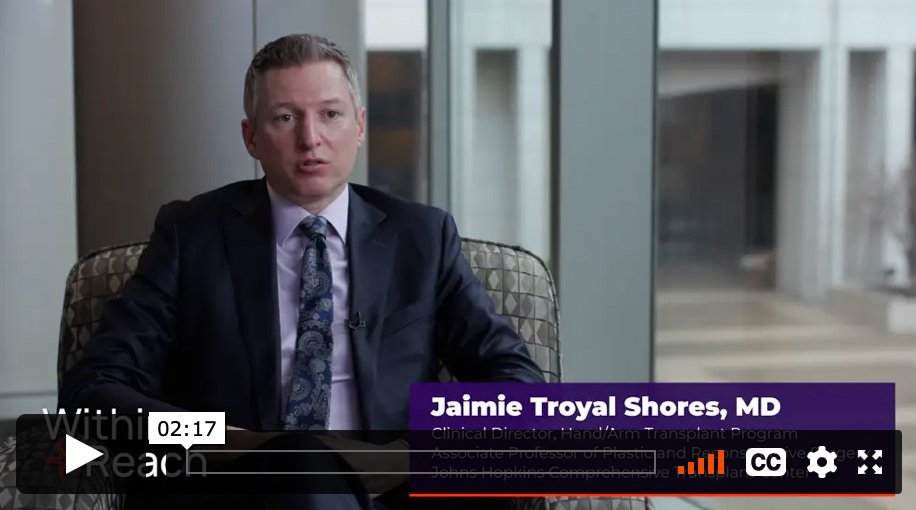
Dr. Jaimie Shores, Hand/Arm Transplant Surgeon, talks about what function can be expected from a hand/arm transplant.
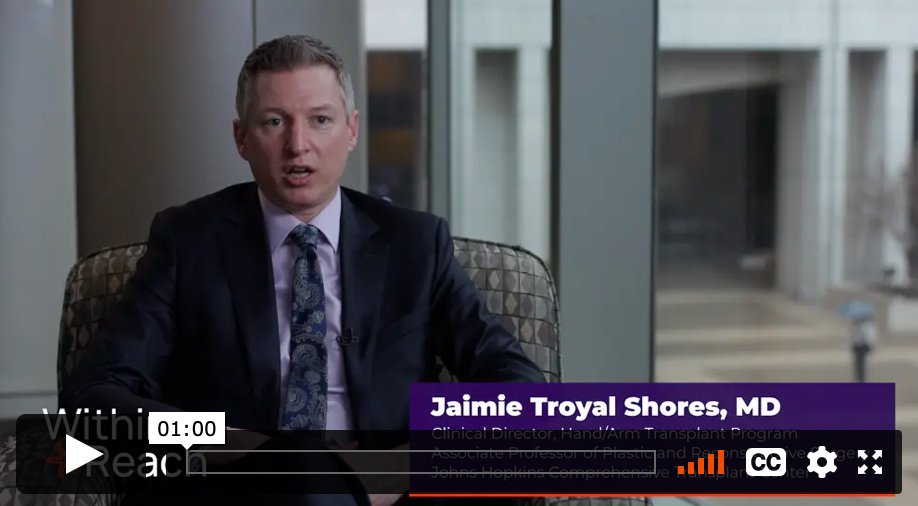
Dr. Jaimie Shores, Hand/Arm Transplant Surgeon, compares prosthetics and hand/arm transplants.
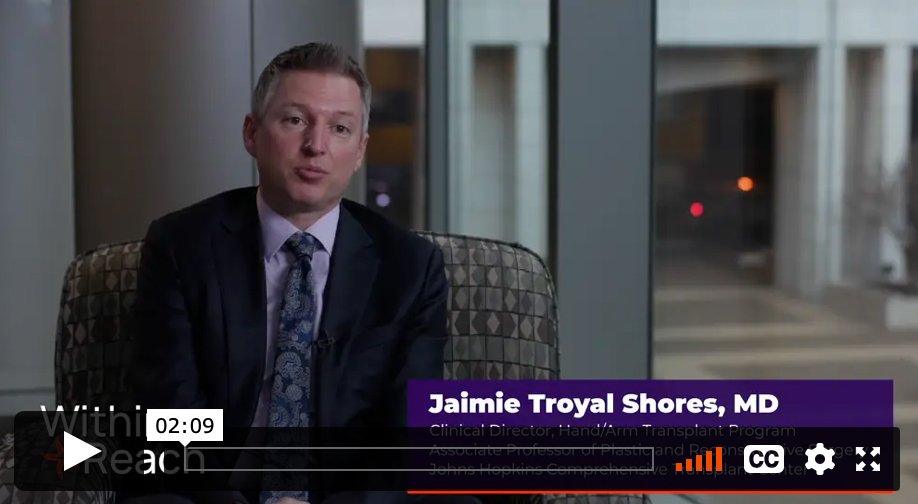
Dr. Jaimie Shores, Hand/Arm Transplant Surgeon, describes the care team that patients may work with.
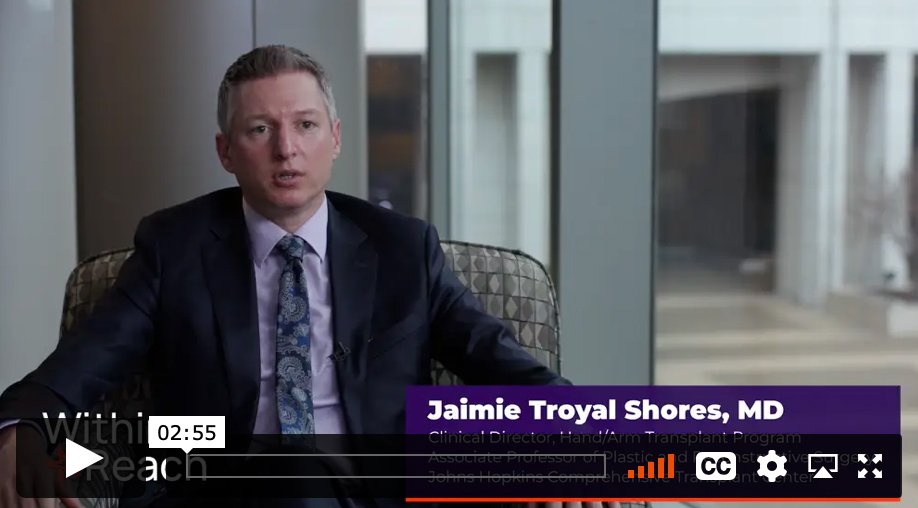
Dr. Jaimie Shores, Hand/Arm Transplant Surgeon, describes characteristics of a good candidate for hand/arm transplantation.
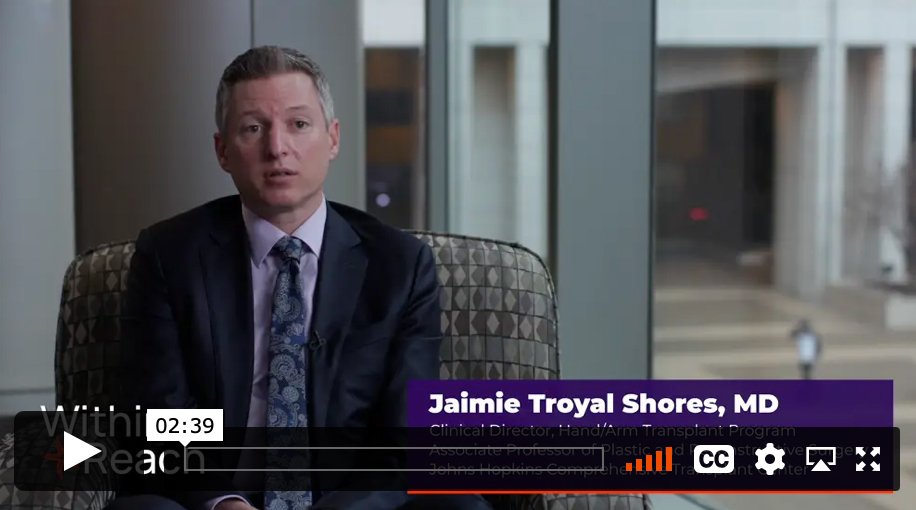
Dr. Jaimie Shores, Hand/Arm Transplant Surgeon, describes the expectations that a patient should have about the hand/arm transplant surgical process.

Dr. Jaimie Shores, Hand/Arm Transplant Surgeon, talks about preventing transplant rejection.
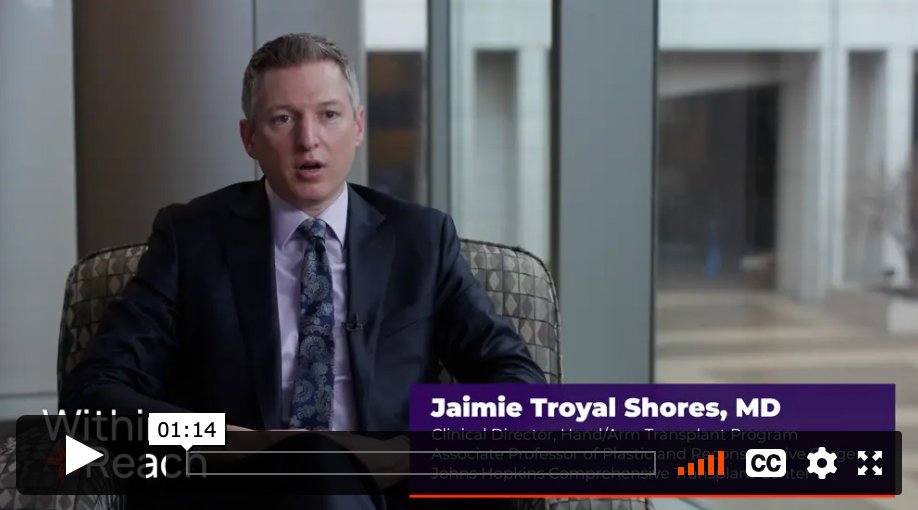
Dr. Jaimie Shores, Hand/Arm Transplant Surgeon, explains the purpose of hand/arm transplantation.

Dr. Jaimie Shores, Hand/Arm Transplant Surgeon, describes how nerves grow in the hand/arm for a transplant recipient.
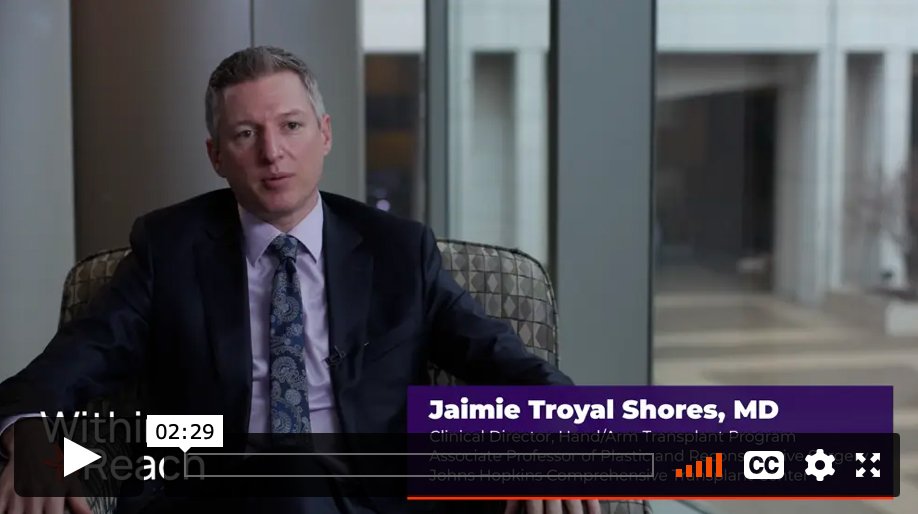
Dr. Jaimie Shores, Hand/Arm Transplant Surgeon, talks about what may lie ahead for hand/arm transplantation as a treatment option.

Dr. Jaimie Shores, Hand/Arm Transplant Surgeon, talks about how the transplant team decides who is eligible for a hand/arm transplant.
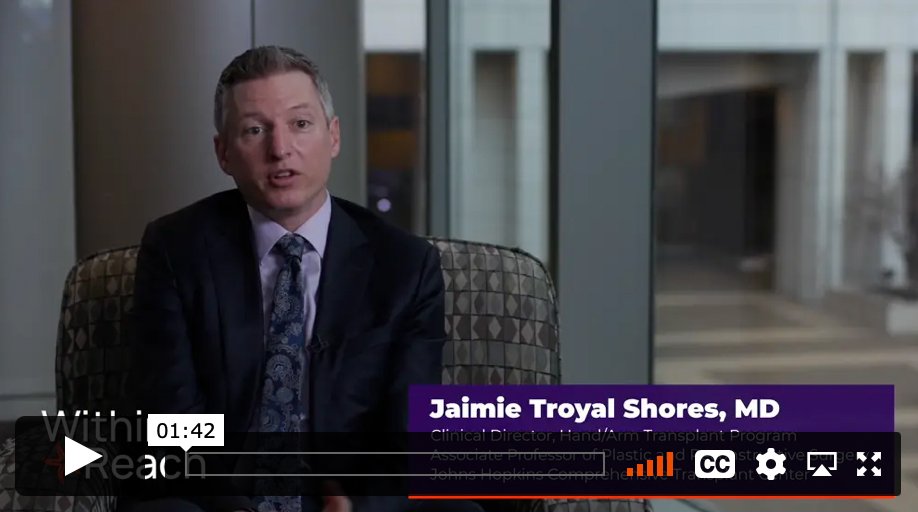
Dr. Jaimie Shores, Hand/Arm Transplant Surgeon, talks about the team of health care professionals and practitioners who are involved in the patient’s hand/arm transplant care.
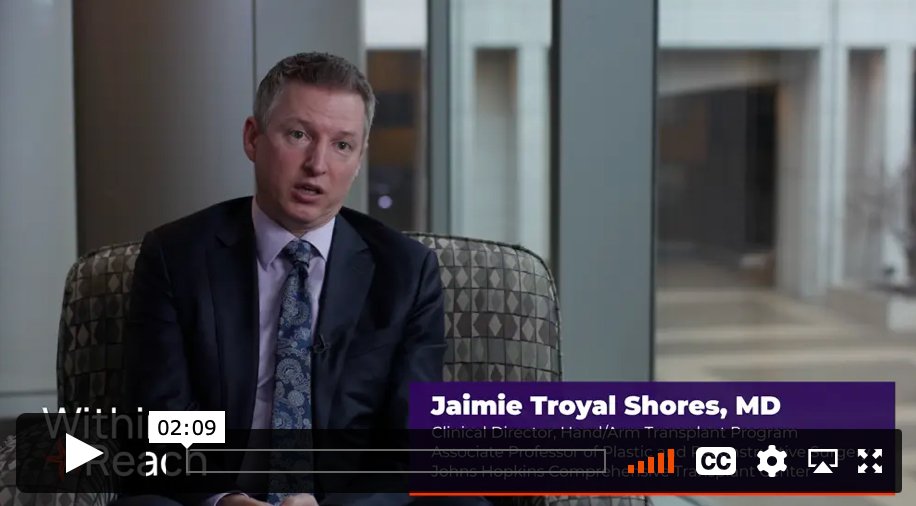
Dr. Jaimie Shores, Hand/Arm Transplant Surgeon, talks about risks during hand/arm transplant surgery.
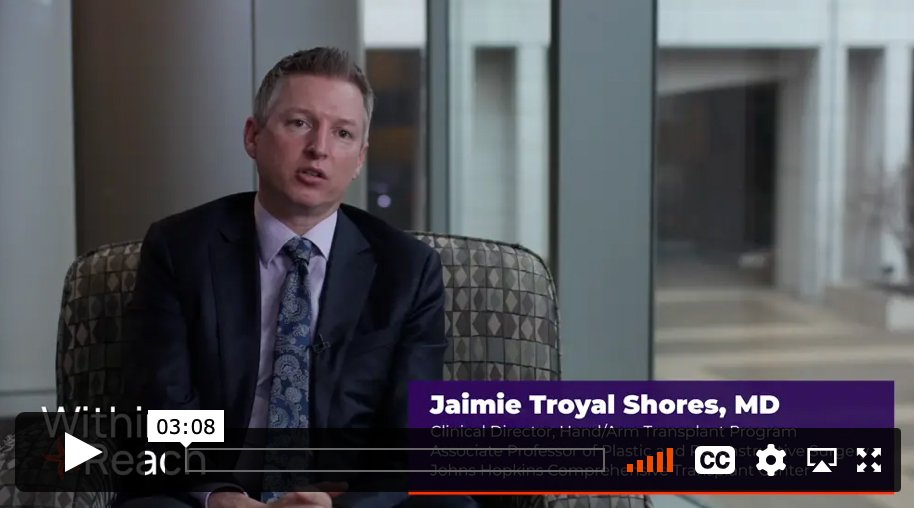
Dr. Jaimie Shores, Hand/Arm Transplant Surgeon, outlines how to recognize early signs of rejection.
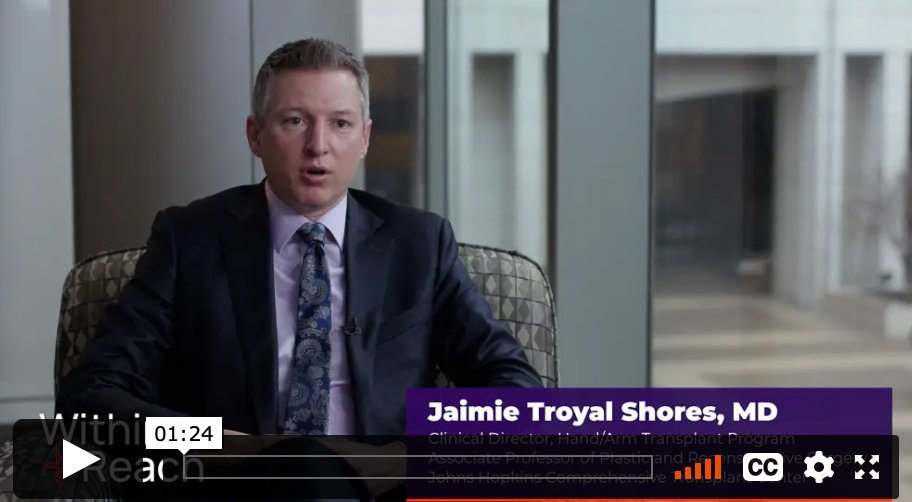
Dr. Jaimie Shores, Hand/Arm Transplant Surgeon, talks about the history of hand/arm transplantation.
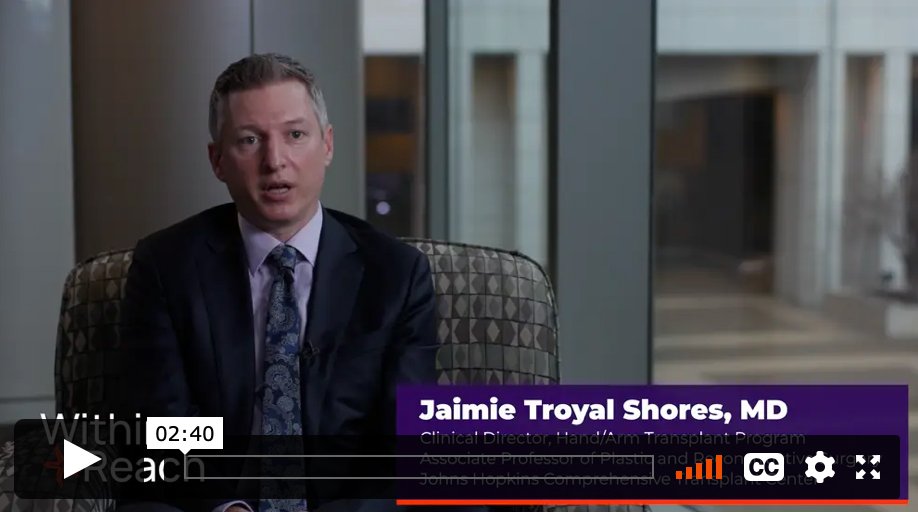
Dr. Jaimie Shores, Hand/Arm Transplant Surgeon, talks about the goals of independence and improved quality of life for hand/arm transplant recipients.
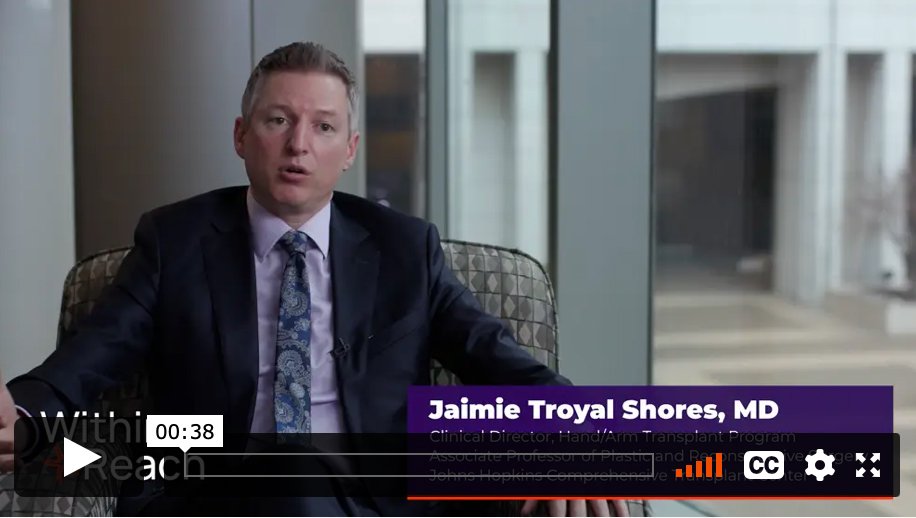
Dr. Jaimie Shores, Hand/Arm Transplant Surgeon, talks about the limited information currently available on long-term outcomes of hand/arm transplants.
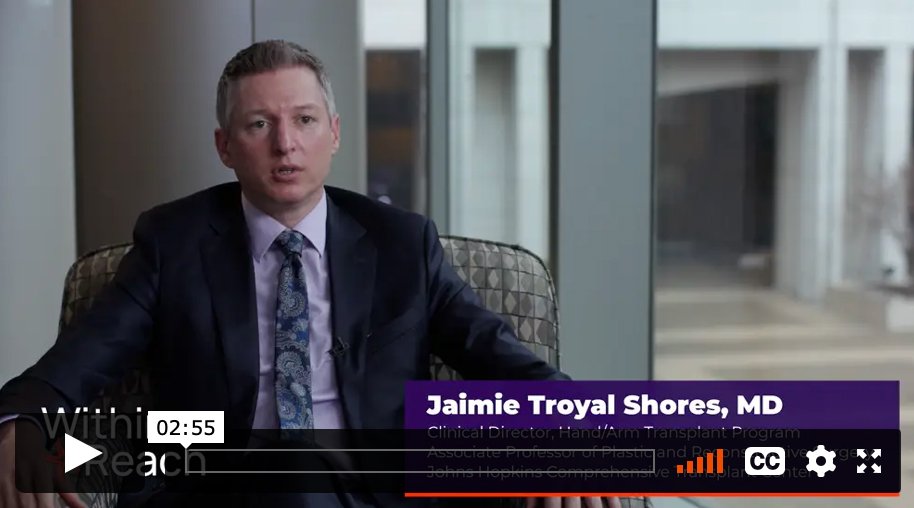
Dr. Jaimie Shores, Hand/Arm Transplant Surgeon, describes who may be a good candidate for hand/arm transplantation.
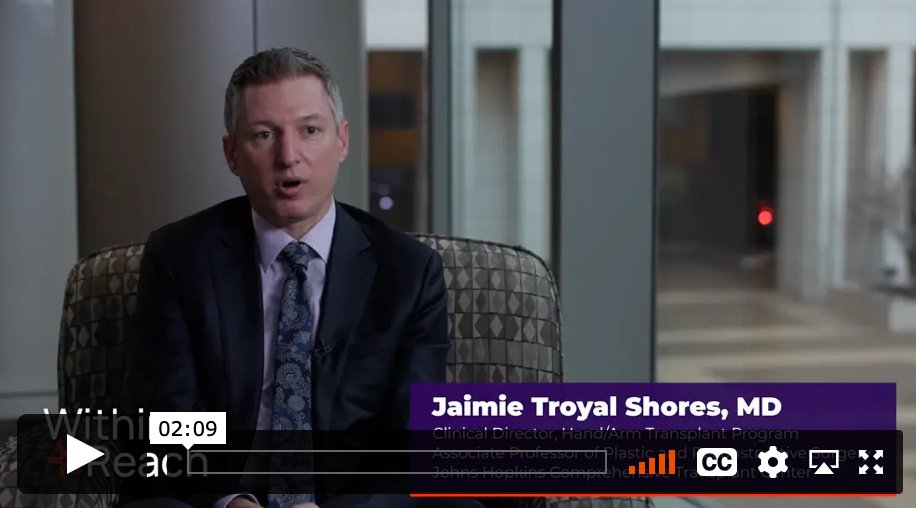
Dr. Jaimie Shores, Hand/Arm Transplant Surgeon, describes the hand/arm donor matching process.

Dr. Jaimie Shores, Hand/Arm Transplant Surgeon, talks about follow-up surgeries or procedures that some patients may need after they receive their hand/arm transplant.
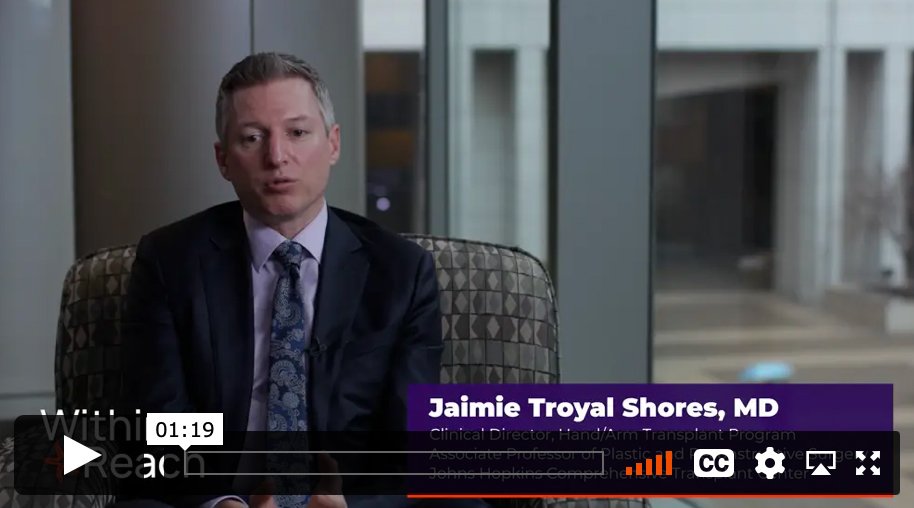
Dr. Jaimie Shores, Hand/Arm Transplant Surgeon, describes what happens during an early rejection episode.
Dr. Scott Tintle, Chief of Hand Surgery
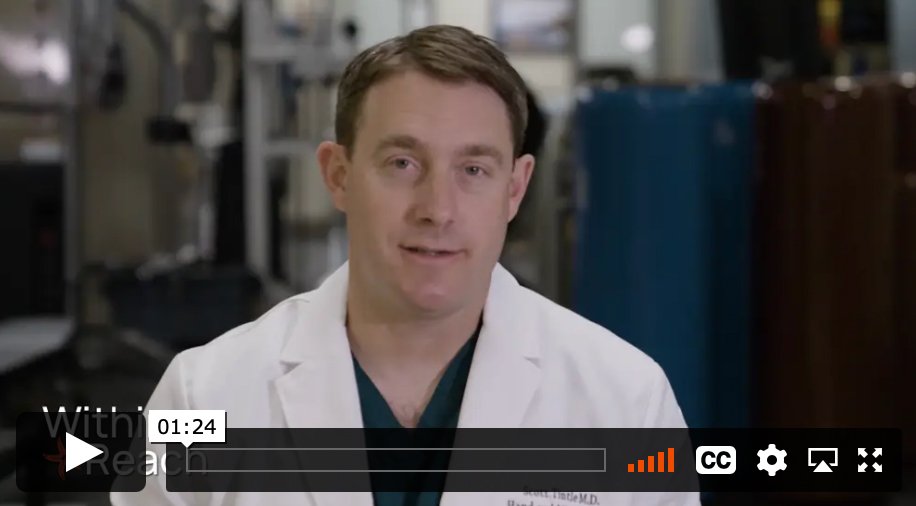
Dr. Scott Tintle, Chief of Hand Surgery, talks about successful outcomes of hand/arm transplantation.
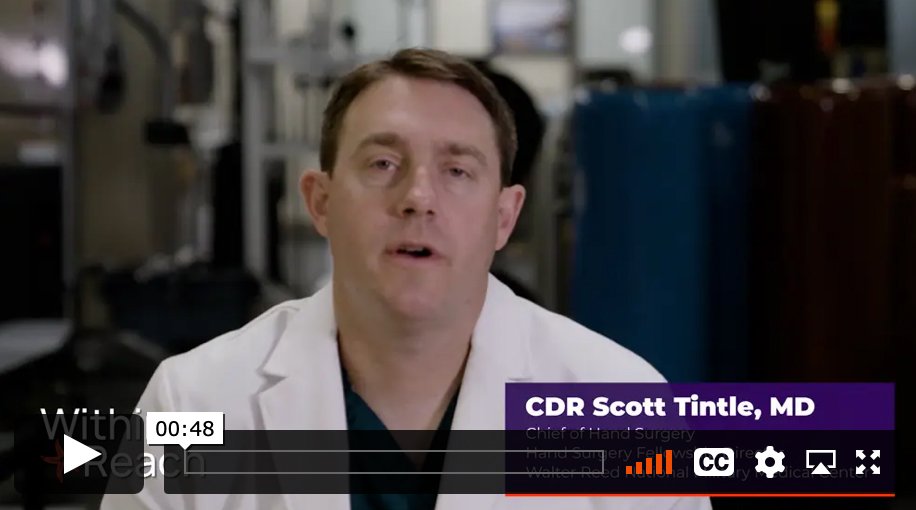
Dr. Scott Tintle, Chief of Hand Surgery, talks about the benefits of hand/arm transplantation for those who have been in the military.
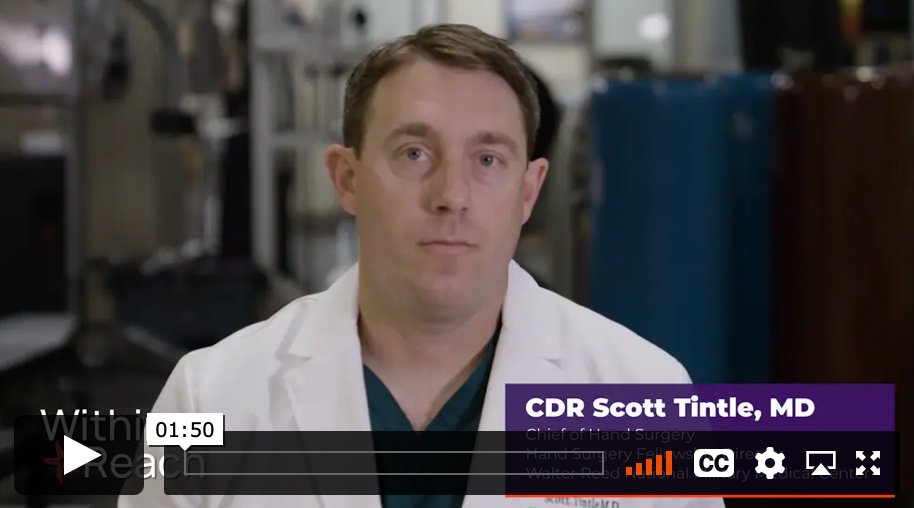
Dr. Scott Tintle, Chief of Hand Surgery, talks about the characteristics of a good hand/arm transplant candidate.
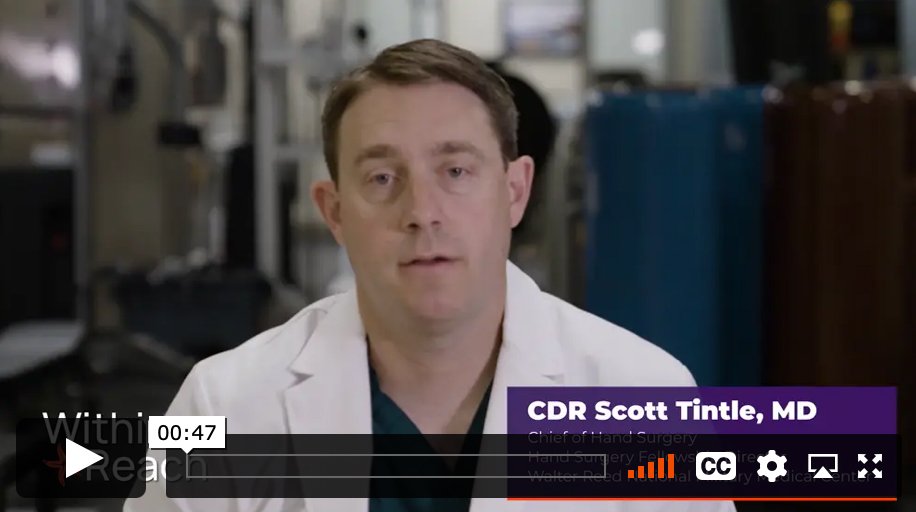
Dr. Scott Tintle, Chief of Hand Surgery, discusses treatment options for people with upper limb loss.
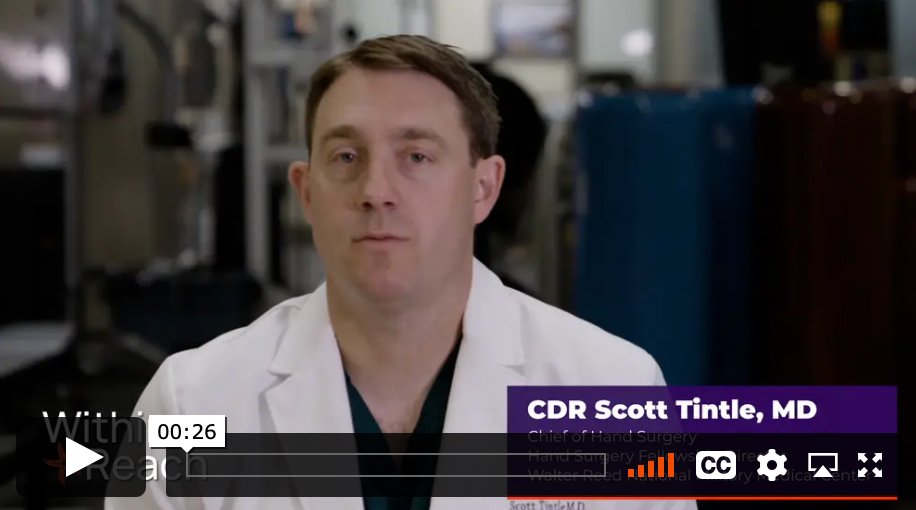
Dr. Scott Tintle, Chief of Hand Surgery, discusses positive psychological outcomes of hand/arm transplantation.
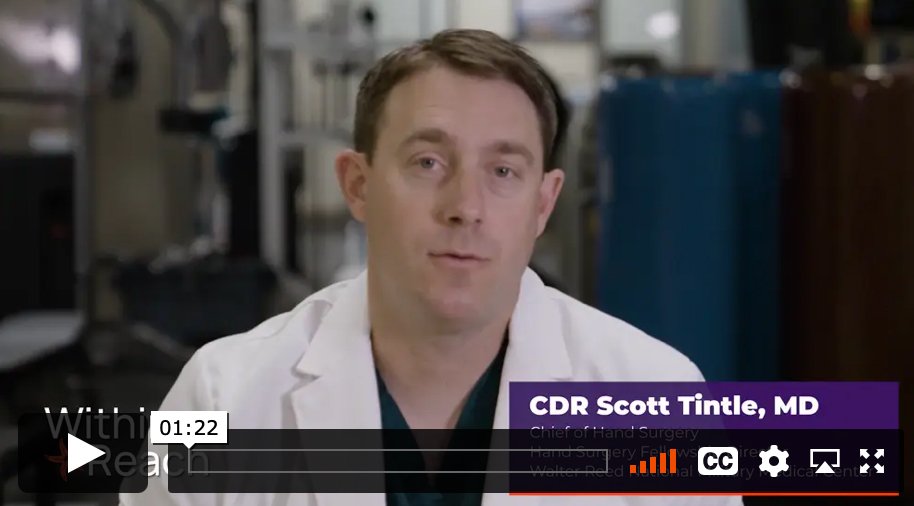
Dr. Scott Tintle, Chief of Hand Surgery, discusses the controversial nature of hand/arm transplantation and talks about the benefits and risks.
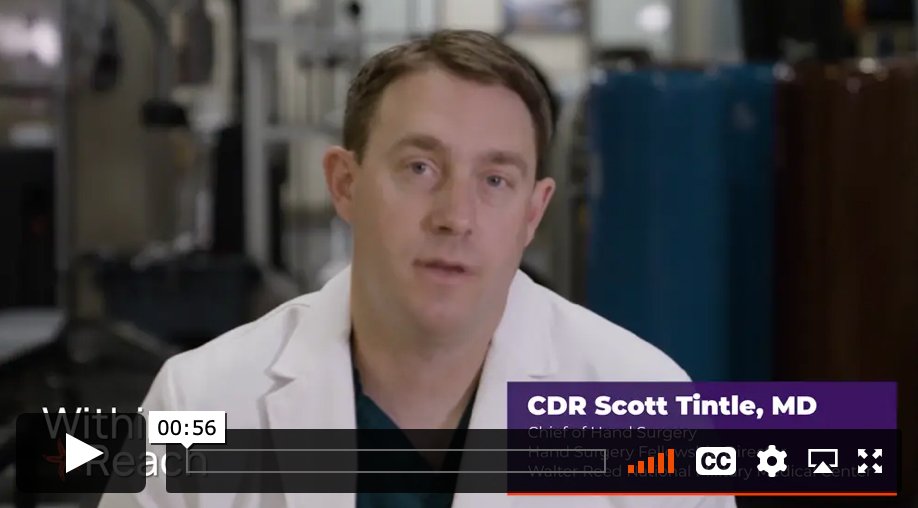
Dr. Scott Tintle, Chief of Hand Surgery, discusses hand/arm transplantation for military personnel.

Dr. Scott Tintle, Chief of Hand Surgery, discusses the lifelong commitment of hand/arm transplantation.

Dr. Scott Tintle, Chief of Hand Surgery, talks about treating military and civilian hand/arm transplant patients.
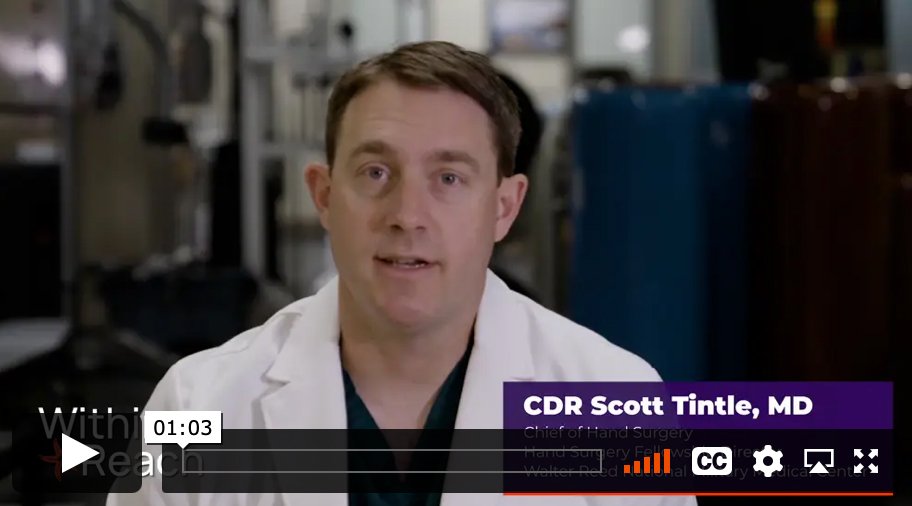
Dr. Scott Tintle, Chief of Hand Surgery, talks about the rehabilitation process for hand/arm transplant recipients at Walter Reed National Military Medical Center.
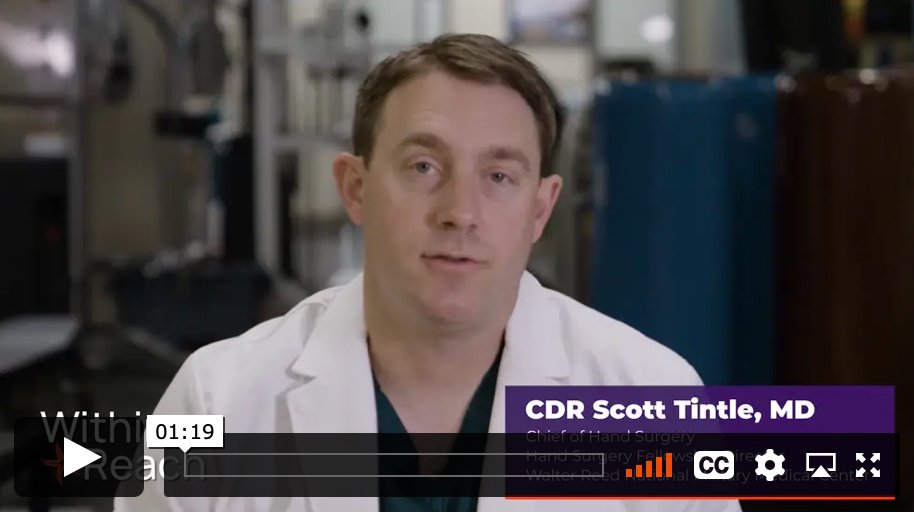
Dr. Scott Tintle, Chief of Hand Surgery, talks about the factors military personnel should consider when thinking about hand/arm transplantation.
Videos of Hand/Arm Transplant Recipients and People With Limb Loss
Lisa Carter (Upper Limb Loss)
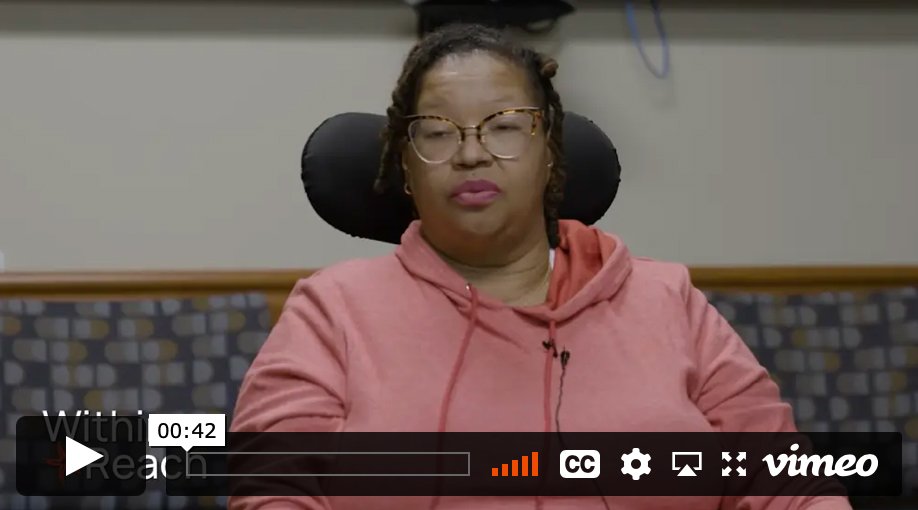
Ms. Carter, with bilateral, below-elbow limb loss (11 years after amputation), describes what is holding her back from getting a hand/arm transplant.
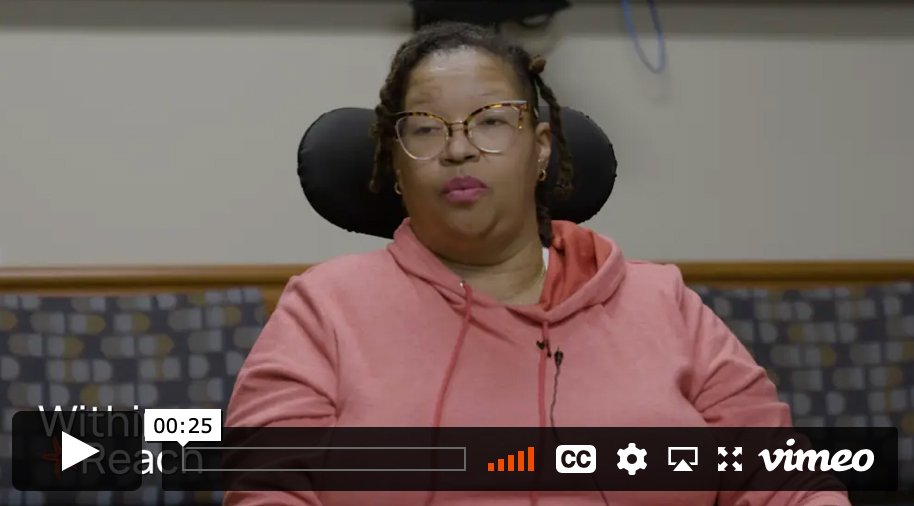
Ms. Carter, with bilateral, below-elbow limb loss (11 years after amputation), talks about her concerns about taking anti-rejection medication.

Ms. Carter, with bilateral, below-elbow limb loss (11 years after amputation), explains why she uses her residual limbs instead of her prostheses.
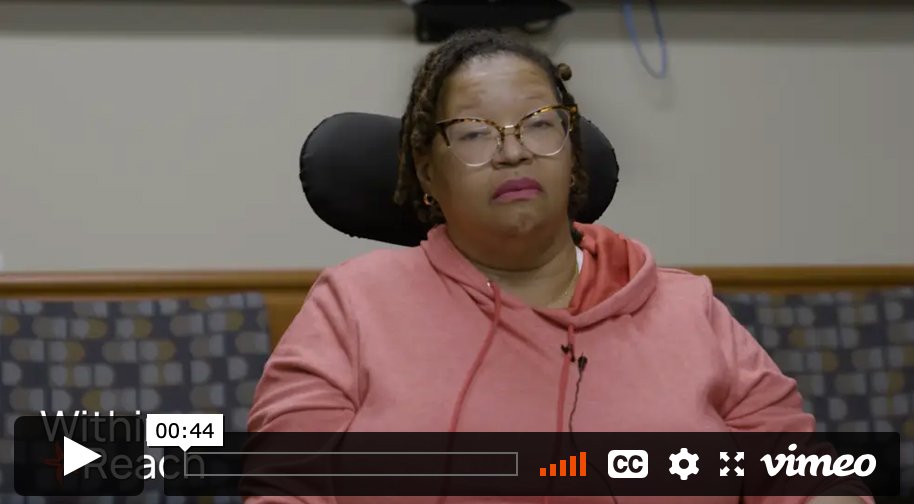
Ms. Carter, with bilateral, below-elbow limb loss (11 years after amputation), talks about her willingness to consider getting a hand/arm transplant.
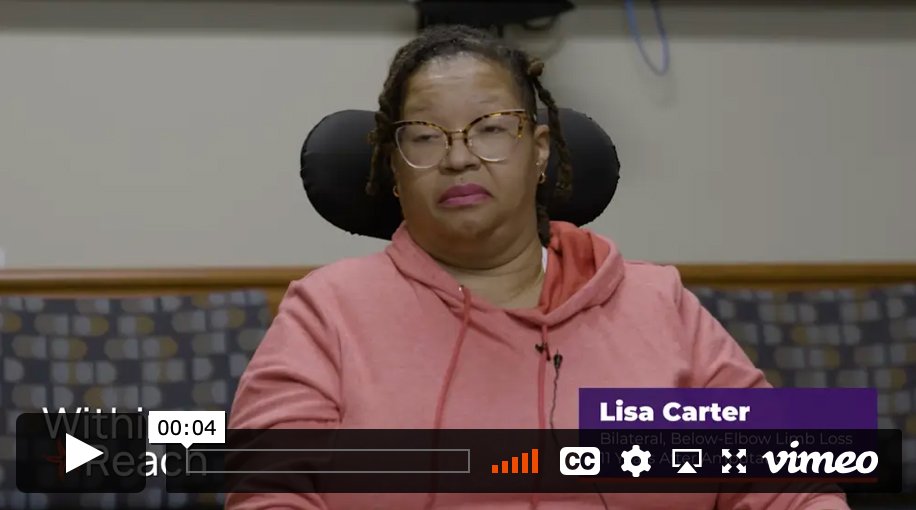
Ms. Carter, with bilateral, below-elbow limb loss (11 years after amputation), weighs the benefits and risks of hand/arm transplantation.
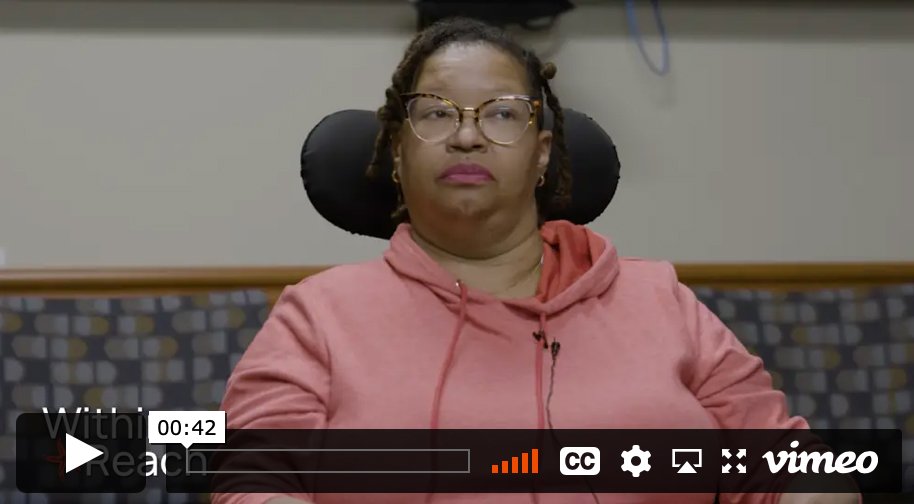
Ms. Carter, with bilateral, below-elbow limb loss (11 years after amputation), talks about her experiences with a body-powered prosthesis.
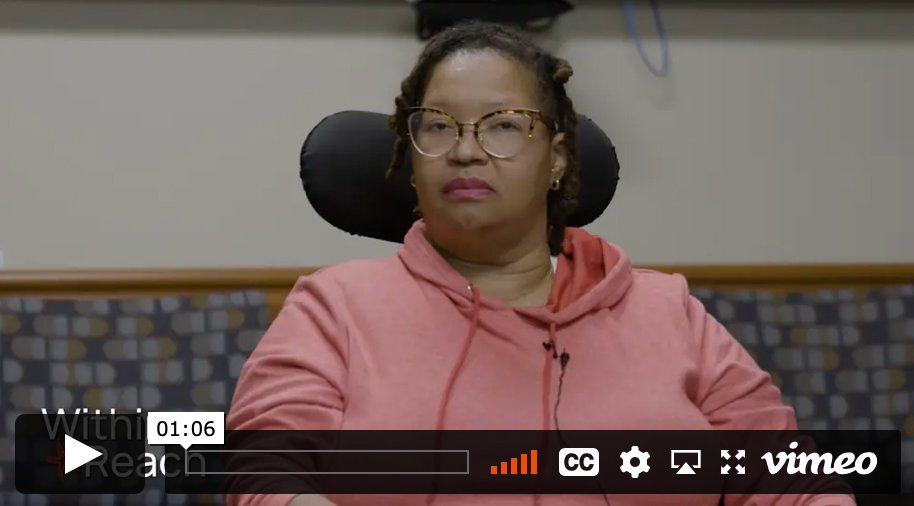
Ms. Carter, with bilateral, below-elbow limb loss (11 years after amputation), explains what motivates her to want a hand/arm transplant.

Ms. Carter, with bilateral, below-elbow limb loss (11 years after amputation), describes what she can do with a myoelectric prosthesis that she could not do before.

Ms. Carter, with bilateral, below-elbow limb loss (11 years after amputation), talks about the learning curve she faced when she began using her myoelectric arm.

Ms. Carter, with bilateral, below-elbow limb loss (11 years after amputation), comments on what would change her mind about getting a hand/arm transplant.
Richard Cicero (Upper Limb Loss)
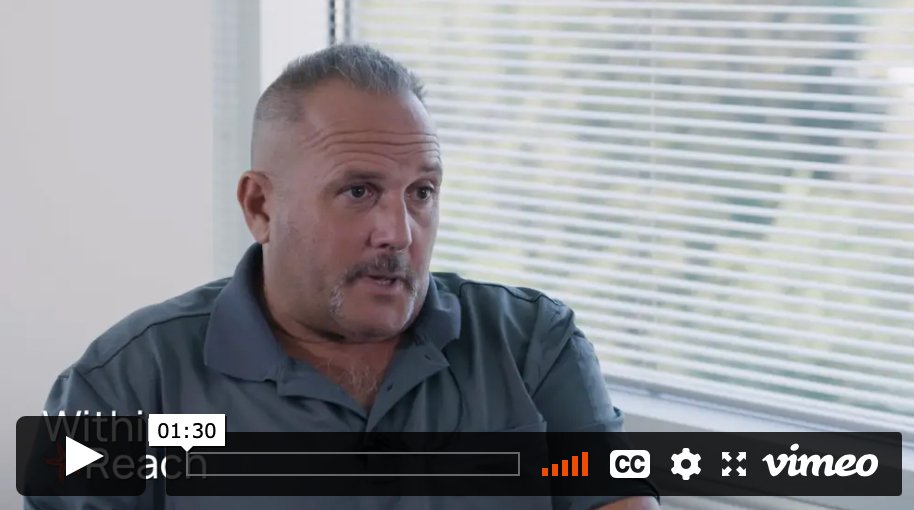
Mr. Cicero, with unilateral, above elbow limb loss (12 years after amputation), talks about how people in the upper limb loss community may view different treatment options.
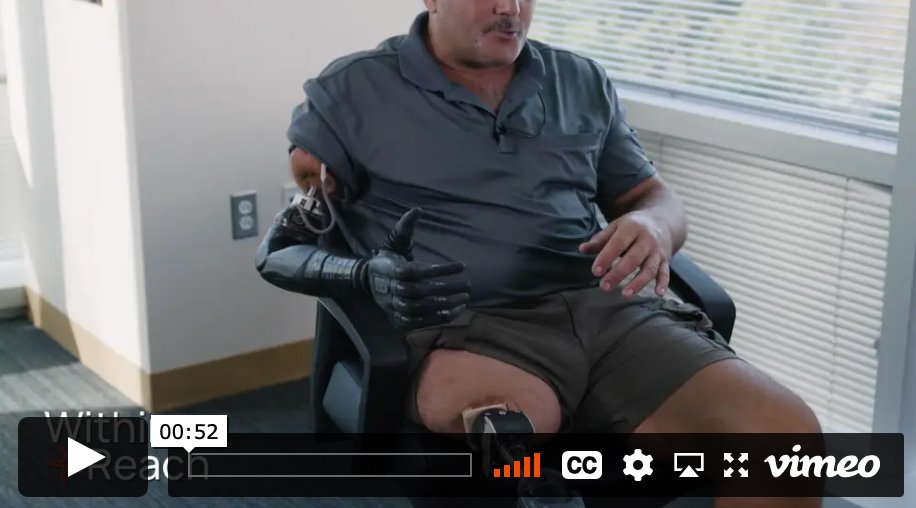
Mr. Cicero, with unilateral, above elbow limb loss (12 years after amputation), demonstrates the range of motion and function of his myoelectric prosthesis.
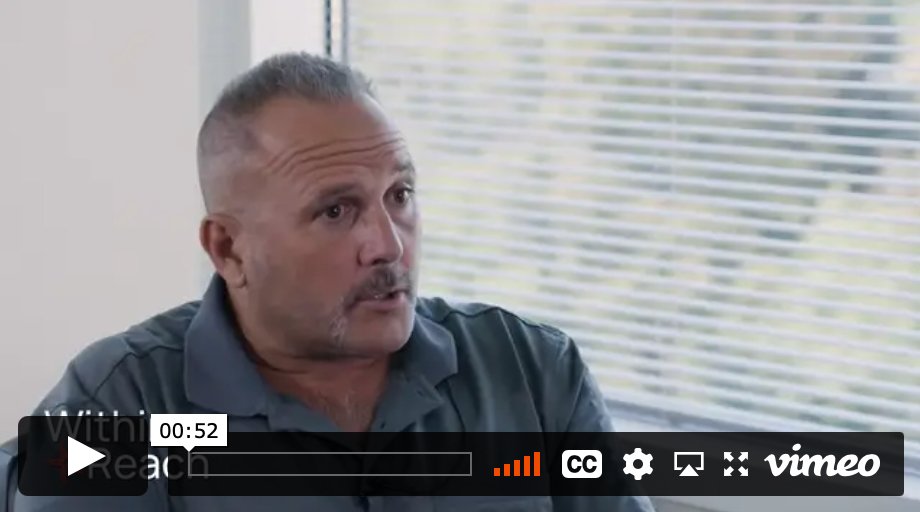
Mr. Cicero, with unilateral, above elbow limb loss (12 years after amputation), discusses what living with prosthetics is like.
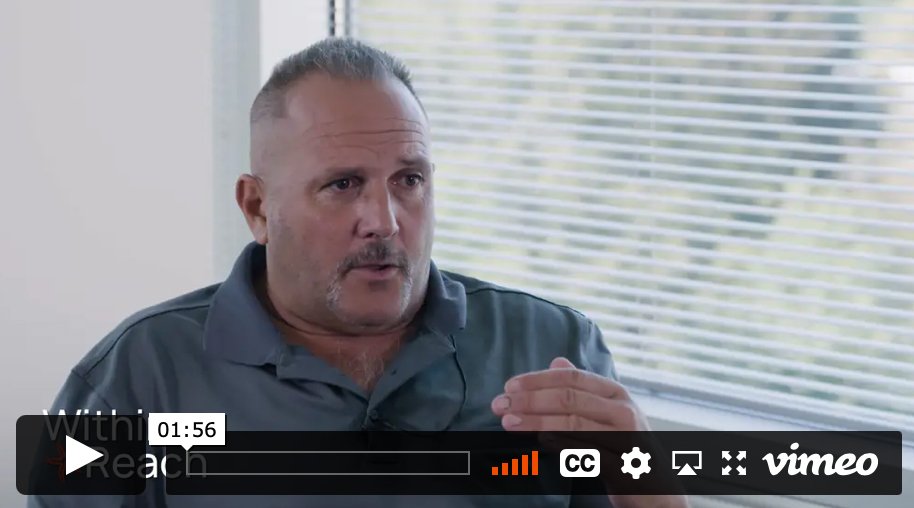
Mr. Cicero, with unilateral, above elbow limb loss (12 years after amputation), explains his thought process and reasoning behind his decision to not pursue hand/arm transplantation.

Mr. Cicero, with unilateral, above elbow limb loss (12 years after amputation), talks about why hand/arm transplantation is not for him.

Mr. Cicero, with unilateral, above elbow limb loss (12 years after amputation), talks about how success factors into identifying candidates for hand/arm transplant.
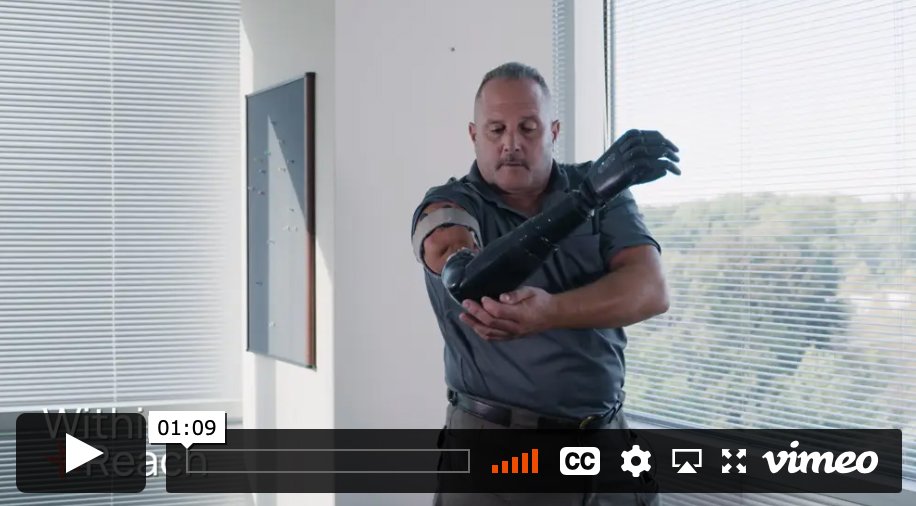
Mr. Cicero, with unilateral, above elbow limb loss (12 years after amputation), demonstrates how to put on and use his myoelectric prosthesis.
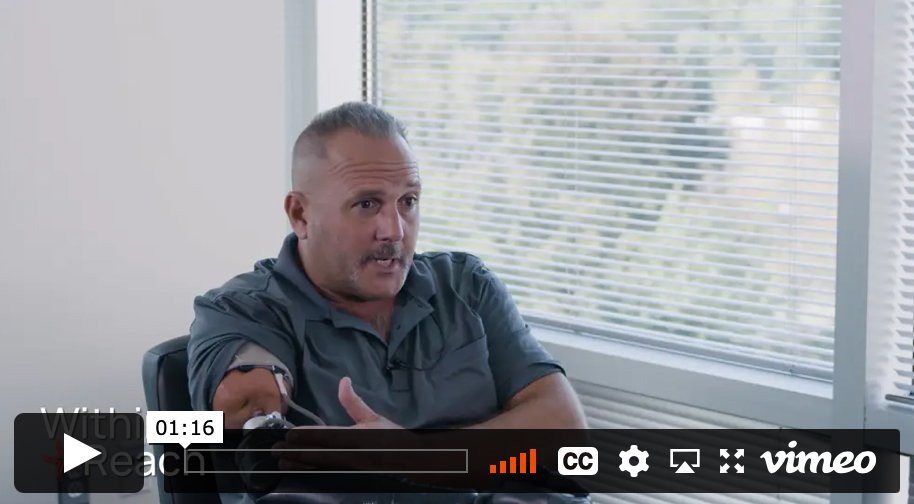
Mr. Cicero, with unilateral, above elbow limb loss (12 years after amputation), describes his experiences with Osseointegration.

Mr. Cicero, with unilateral, above elbow limb loss (12 years after amputation), talks about how the risks of a hand/arm transplant outweigh the benefits for him.
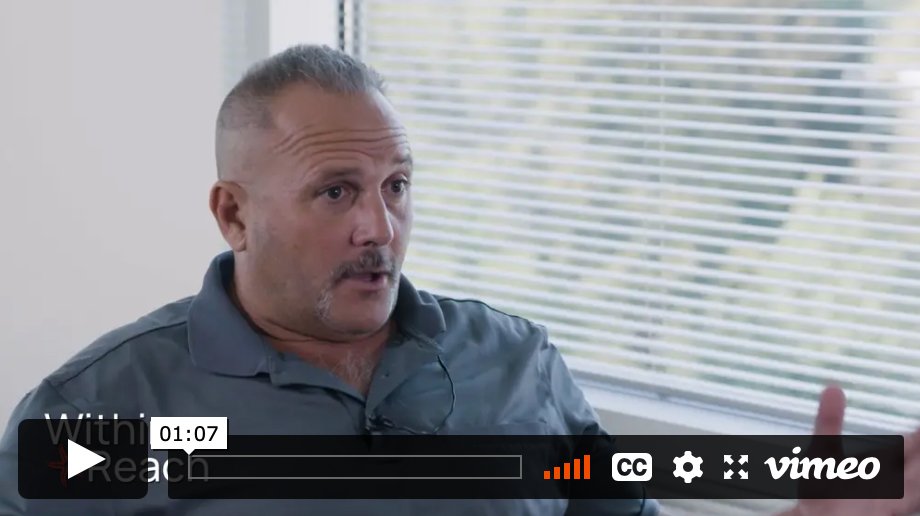
Mr. Cicero, with unilateral, above elbow limb loss (12 years after amputation), talks about the pros and cons of his body-powered prosthesis.
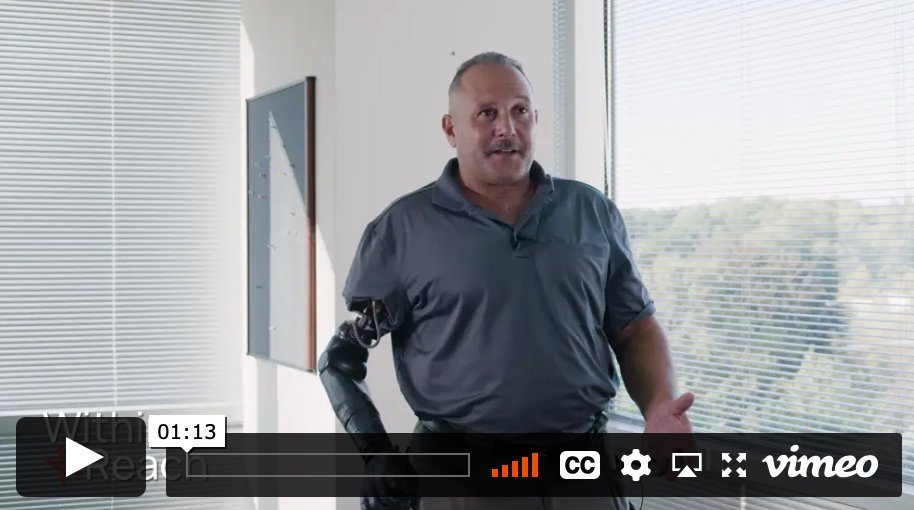
Mr. Cicero, with unilateral, above elbow limb loss (12 years after amputation), describes the pros and cons of his myoelectric prosthesis.
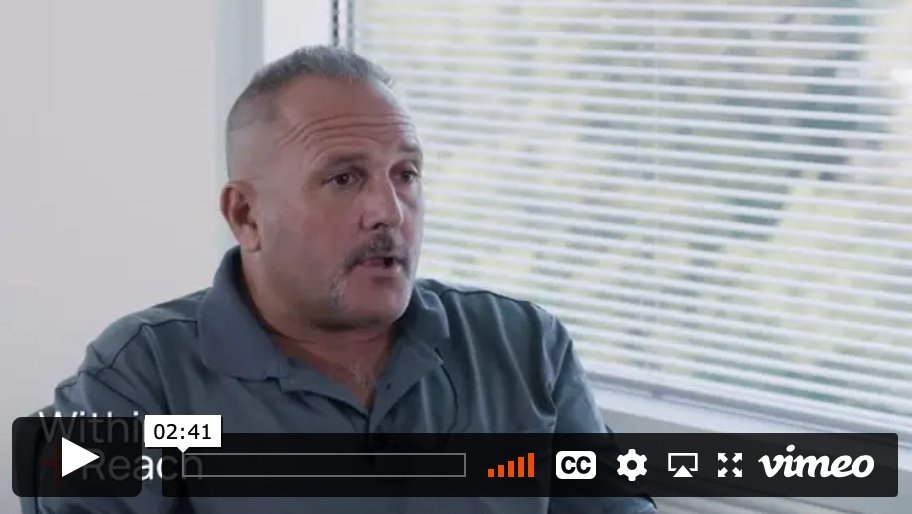
Mr. Cicero, with unilateral, above elbow limb loss (12 years after amputation), talks about the patients’ choice in treatment decision-making.
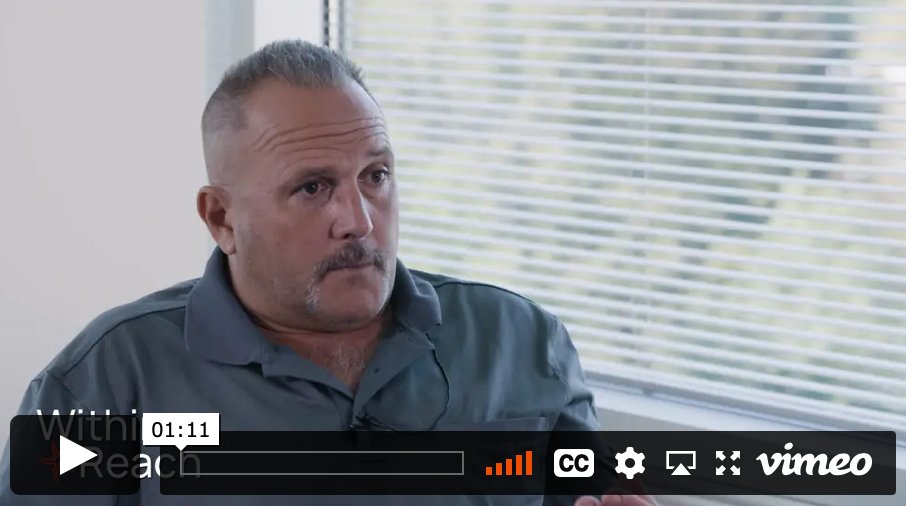
Mr. Cicero, with unilateral, above elbow limb loss (12 years after amputation), outlines concerns he has about getting a hand/arm transplant.
Cathy Hill (Upper Limb Loss)
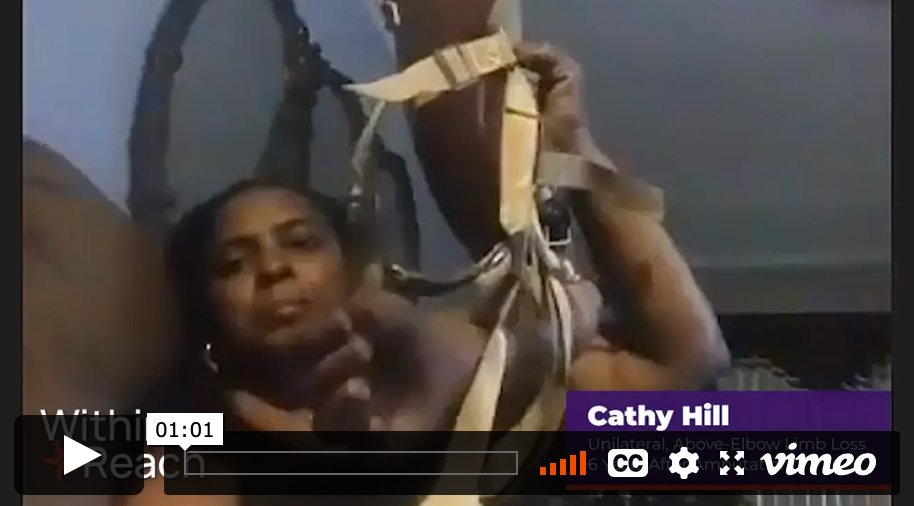
Ms. Hill, with unilateral, above-elbow limb loss (3 years after amputation), describes how her body-powered prosthesis works and what functions she gains with it.

Ms. Hill, with unilateral, above-elbow limb loss (6 years after amputation), talks about how she would have gotten a hand/arm transplant if she could do things over again.

Ms. Hill, with unilateral, above-elbow limb loss (3 years after amputation), lists the pros and cons of her body-powered prosthesis.

Ms. Hill, with unilateral, above-elbow limb loss (6 years after amputation), talks about how the time away from home factored into her decision about whether to get a hand/arm transplant.

Ms. Hill, with unilateral, above-elbow limb loss (6 years after amputation), talks about questions she has about hand/arm transplantation.
Eric Lund (Hand/Arm Transplant Recipient)
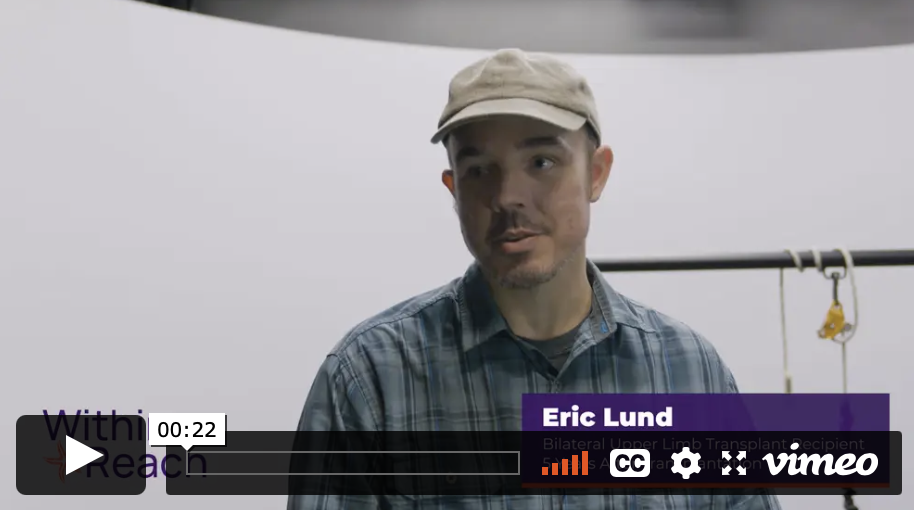
Mr. Lund, bilateral upper limb transplant recipient (5 years after transplantation), talks about hurdles to getting approved for hand/arm transplantation.

Mr. Lund, bilateral upper limb transplant recipient (5 years after transplantation), shows his range of arm motion.

Mr. Lund, bilateral upper limb transplant recipient (5 years after transplantation), describes what it was like when he was notified of a potential hand transplant donor.

Mr. Lund, bilateral upper limb transplant recipient (5 years after transplantation), talks about how his transplants have affected his life.

Mr. Lund, bilateral upper limb transplant recipient (5 years after transplantation), talks about how often he frequents hospitals for various appointments.

Mr. Lund, bilateral upper limb transplant recipient (5 years after transplantation), talks about why he decided to get a hand/arm transplant.
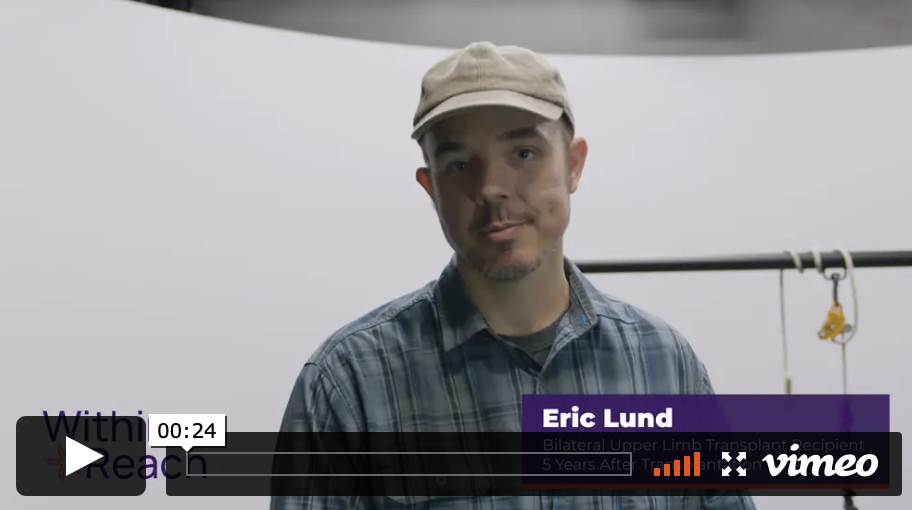
Mr. Lund, bilateral upper limb transplant recipient (5 years after transplantation), talks about the functions he hopes to regain.

Mr. Lund, bilateral upper limb transplant recipient (5 years after transplantation), describes what clinicians look for in a candidate for hand/arm transplantation.
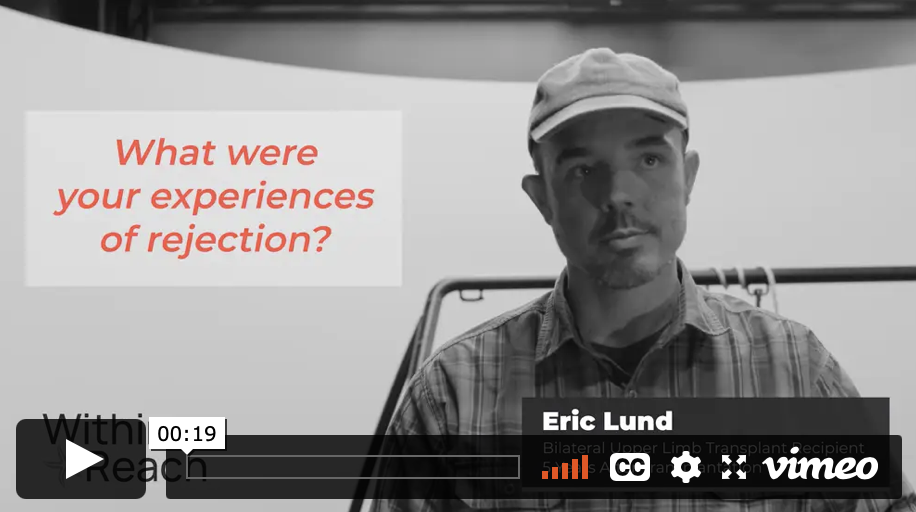
Mr. Lund, bilateral upper limb transplant recipient (5 years after transplantation), talks about his experiences of rejection.

Mr. Lund, bilateral upper limb transplant recipient (5 years after transplantation), explains his rehabilitation experience.
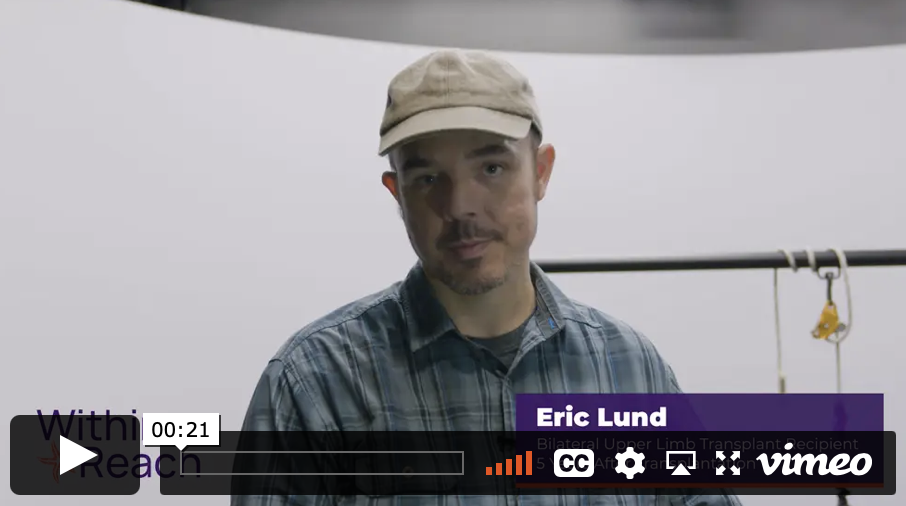
Mr. Lund, bilateral upper limb transplant recipient (5 years after transplantation), explains how he uses resting hand splints.

Mr. Lund, bilateral upper limb transplant recipient (5 years after transplantation), describes how he weighed the benefits and the risks of hand/arm transplantation.
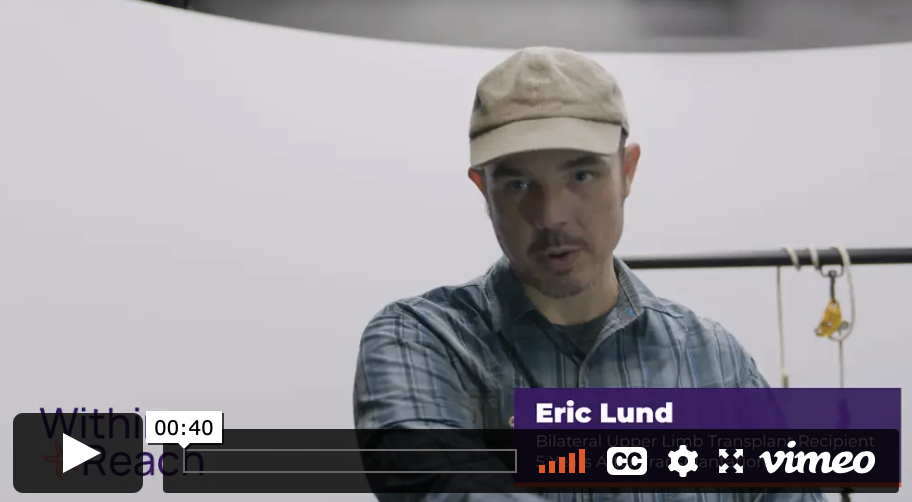
Mr. Lund bilateral upper limb transplant recipient (5 years after transplantation), describes the feeling and sensation he has in his hands/arms.
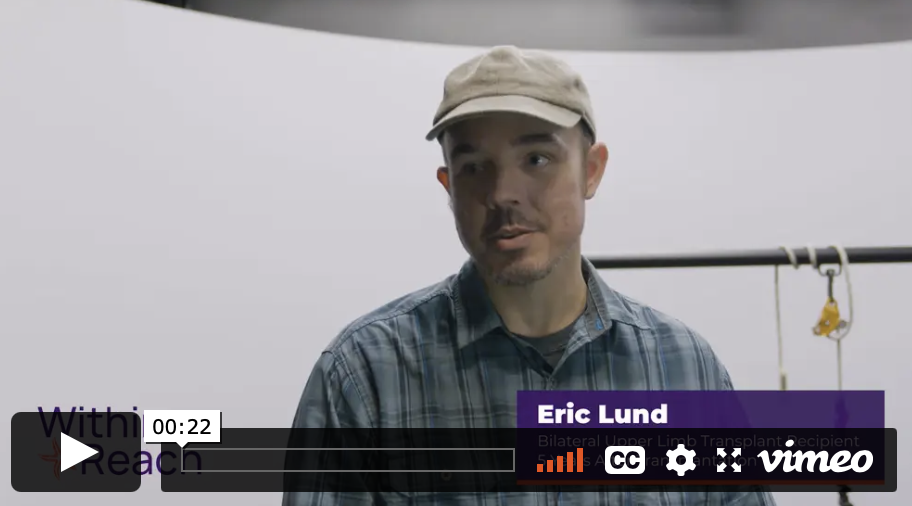
Mr. Lund, bilateral upper limb transplant recipient (5 years after transplantation), talks about his experience going through the evaluation process.
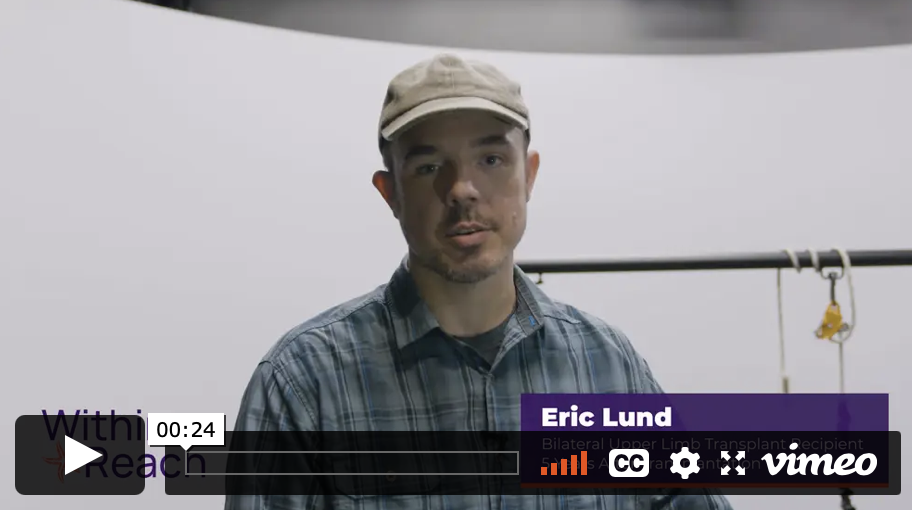
Mr. Lund, bilateral upper limb transplant recipient (5 years after transplantation), talks about how long he was in the hospital.
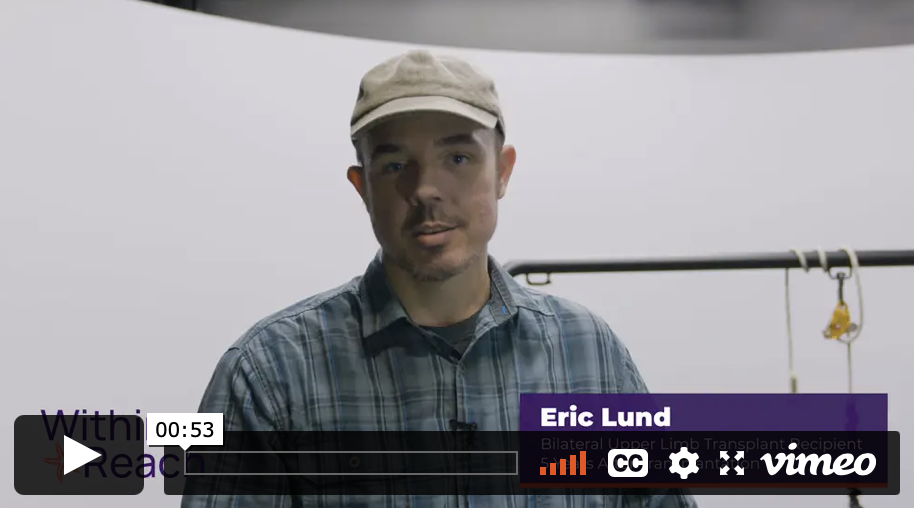
Mr. Lund, bilateral upper limb transplant recipient (5 years after transplantation), talks about living with his transplants.
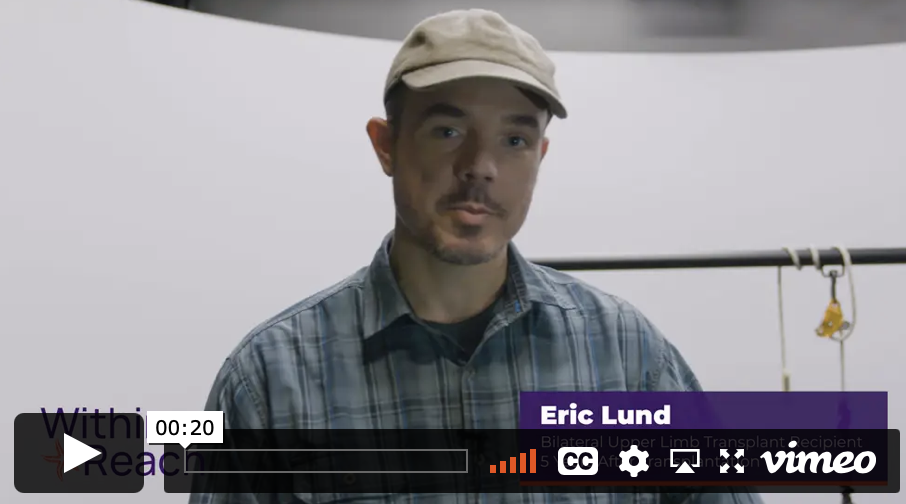
Mr. Lund, bilateral upper limb transplant recipient (5 years after transplantation), talks about his biggest piece of advice for people interested in getting a hand/arm transplant.
Chris Pollock (Hand/Arm Transplant Recipient)
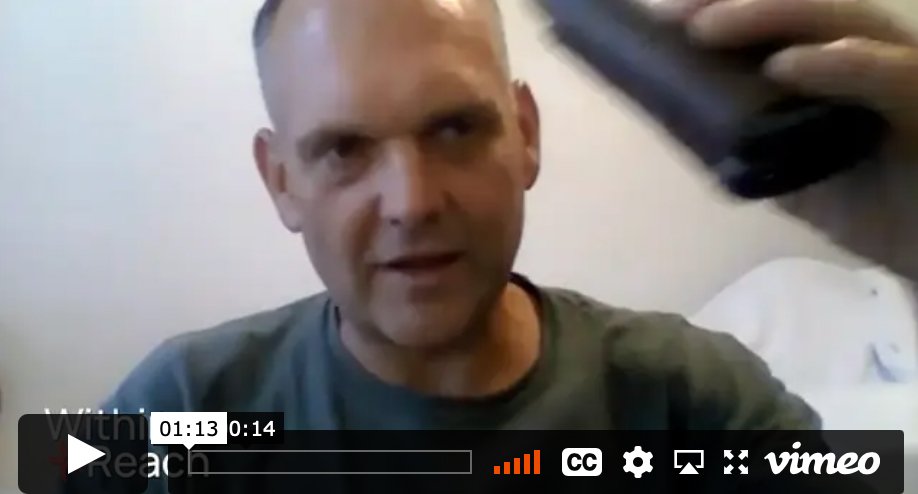
Mr. Pollock, a bilateral, upper limb transplant recipient (11 ½ years after transplantation), demonstrates and explains how his hands function.
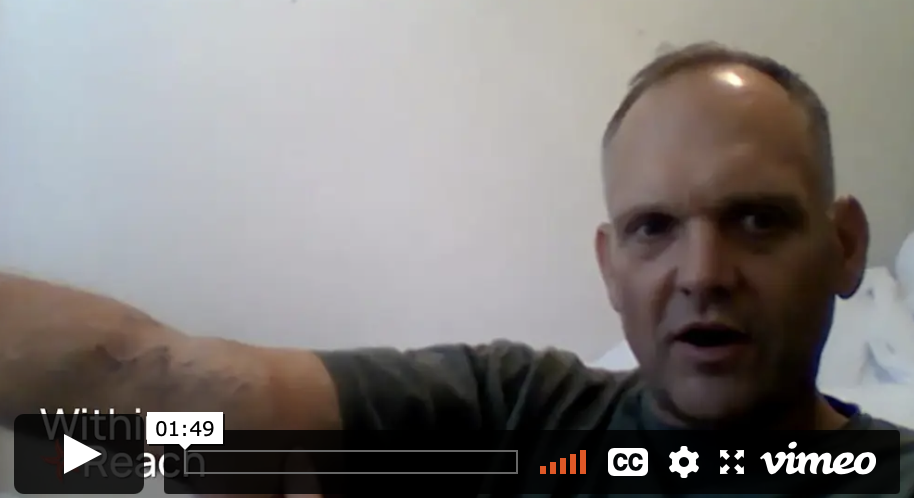
Mr. Pollock, a bilateral, upper limb transplant recipient (11 ½ years after transplantation), explains how his expectations for his hand transplants have been met.

Mr. Pollock, a bilateral, upper limb transplant recipient (11 ½ years after transplantation), talks about what his hand transplants are like after having them for 11 years.

Mr. Pollock, a bilateral, upper limb transplant recipient (11 ½ years after transplantation), recalls the information he learned when he first became aware of hand/arm transplantation.

Mr. Pollock, a bilateral, upper limb transplant recipient (11 ½ years after transplantation), talks about the importance of meeting with one’s doctors and listening to what they say.

Mr. Pollock, a bilateral, upper limb transplant recipient (11 ½ years after transplantation), talks about his earlier experiences during recovery after his hand/arm transplants.

Mr. Pollock, a bilateral, upper limb transplant recipient (11 ½ years after transplantation), recalls his experiences with his myoelectric prosthesis.

Mr. Pollock, a bilateral, upper limb transplant recipient (11 ½ years after transplantation), talks about his mindset as an upper limb transplant recipient.
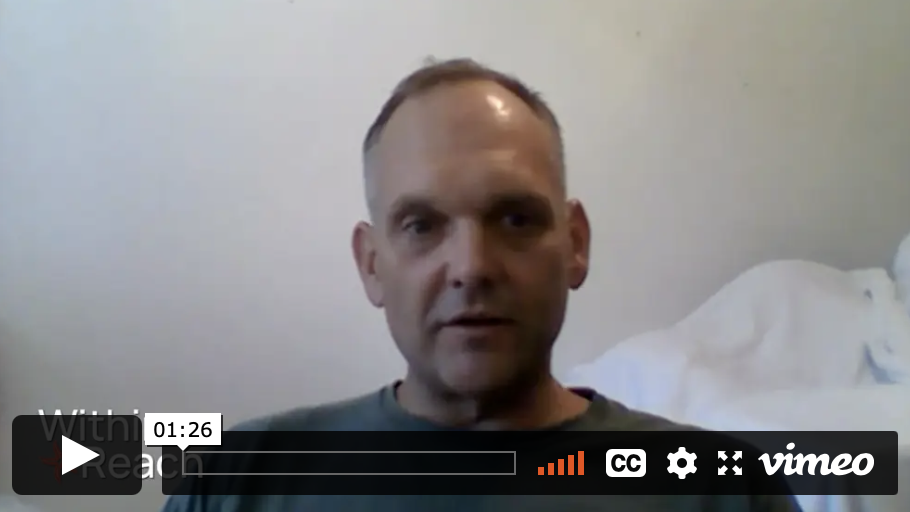
Mr. Pollock, a bilateral, upper limb transplant recipient (11 ½ years after transplantation), talks about his positive experiences from having hand transplants.

Mr. Pollock, a bilateral, upper limb transplant recipient (11 ½ years after transplantation), talks about jobs that he can do with his hand/arm transplants and the limitations.

Mr. Pollock, a bilateral, upper limb transplant recipient (11 ½ years after transplantation), talks about asking for help from others.
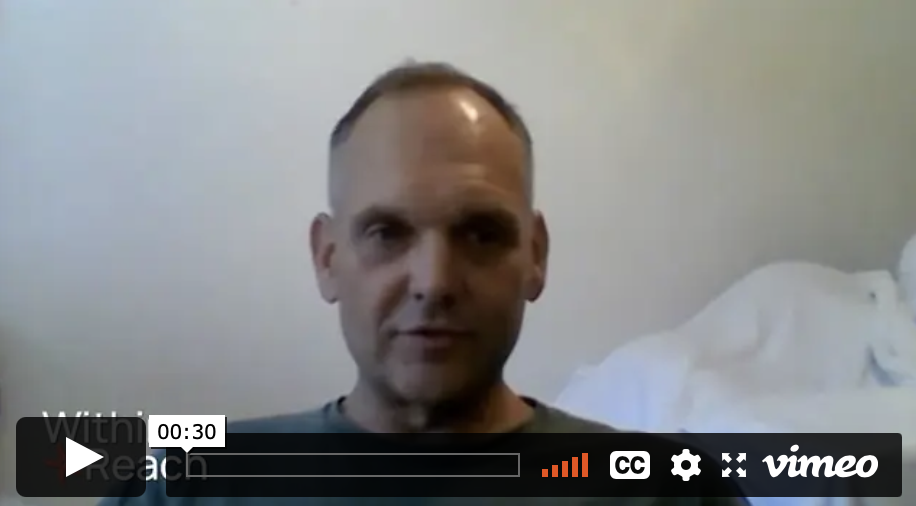
Mr. Pollock, a bilateral upper limb transplant recipient (11 ½ years after transplantation), outlines his anti-rejection medication regimen.
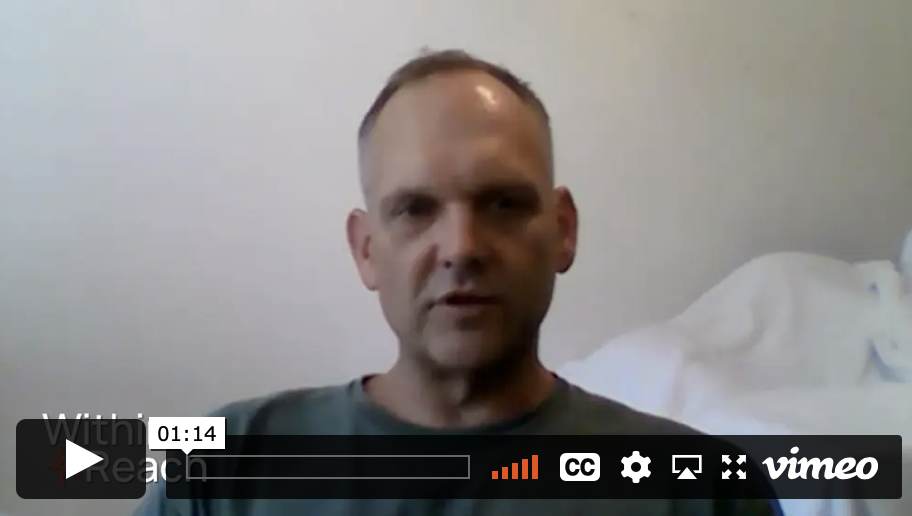
Mr. Pollock, a bilateral, upper limb transplant recipient (11 ½ years after transplantation), explains why he decided to get hand/arm transplants.

Mr. Pollock, a bilateral, upper limb transplant recipient (11 ½ years after transplantation), talks about what his transplants enable him to do.
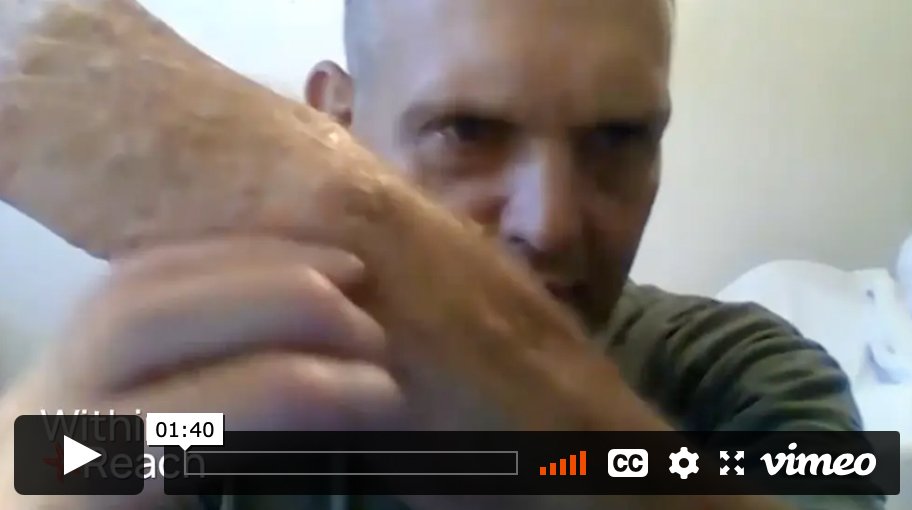
Mr. Pollock, a bilateral, upper limb transplant recipient (11 ½ years after transplantation), shows what his transplanted limbs look like and how they are connected to his native limbs.

Mr. Pollock, a bilateral, upper limb transplant recipient (11 ½ years after transplantation), talks about how he first became aware of and interested in hand/arm transplants.
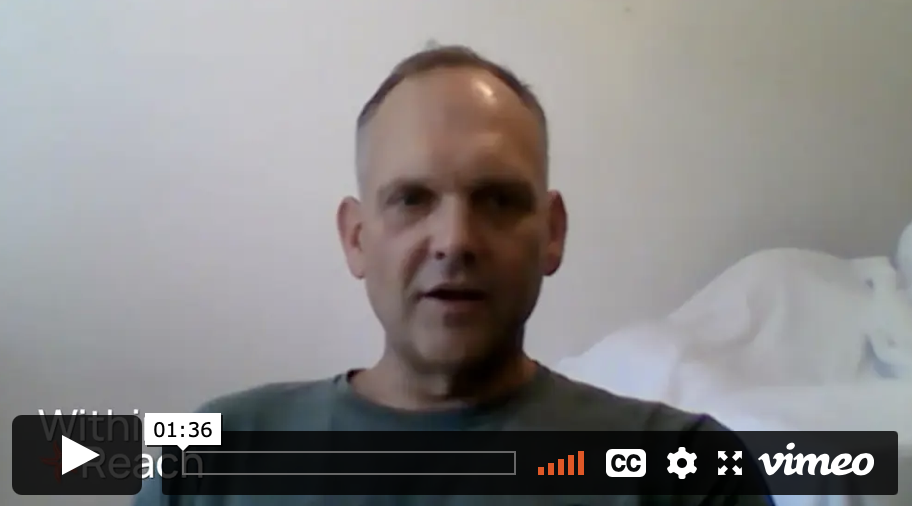
Mr. Pollock, a bilateral, upper limb transplant recipient (11 ½ years after transplantation), explains his experience with the hand/arm transplant evaluation process.

Mr. Pollock, a bilateral, upper limb transplant recipient (11 ½ years after transplantation), talks about his experiences with rehabilitation and how his therapy has changed over time.

Mr. Pollock, a bilateral, upper limb transplant recipient (11 ½ years after transplantation), explains his views on benefits outweighing the risks of hand/arm transplantation.
Beth Skinner (Upper Limb Loss)
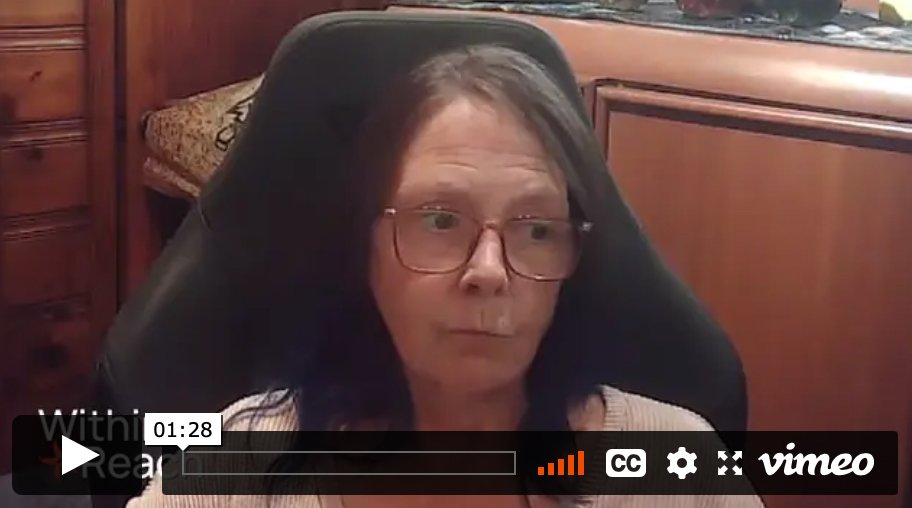
Ms. Skinner, with unilateral, below-elbow limb loss (5 years after amputation), talks about how her mindset has changed about her own limb loss.
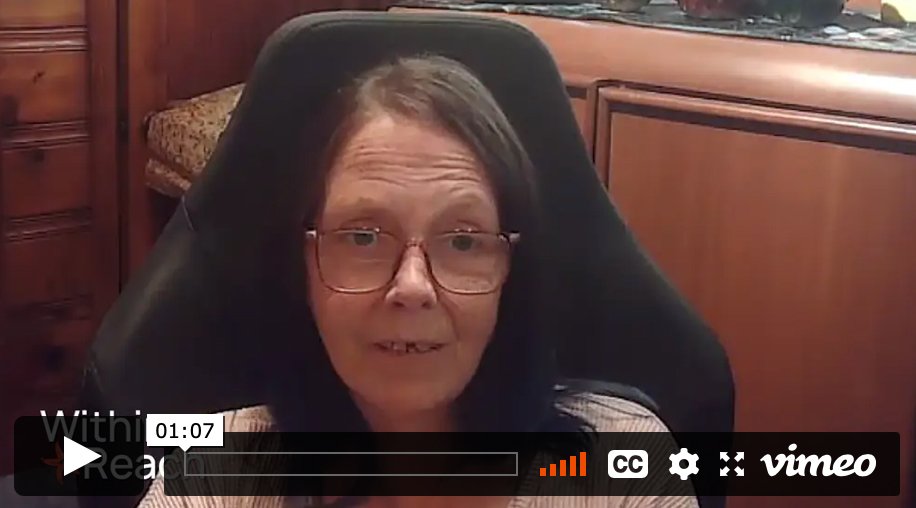
Ms. Skinner, with unilateral, below-elbow limb loss (5 years after amputation), describes how her own sense of self has changed.
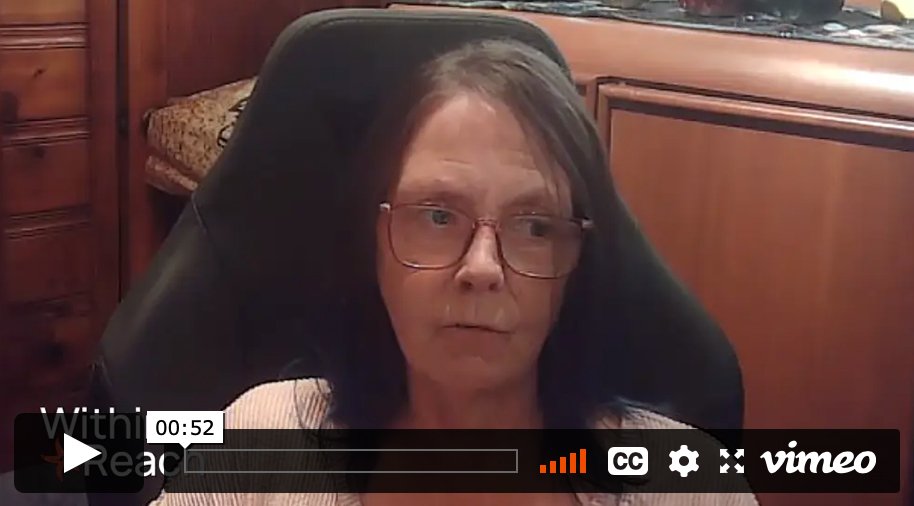
Ms. Skinner, with unilateral, below-elbow limb loss (5 years after amputation), discusses her thoughts on decision-making about hand/arm transplantation.
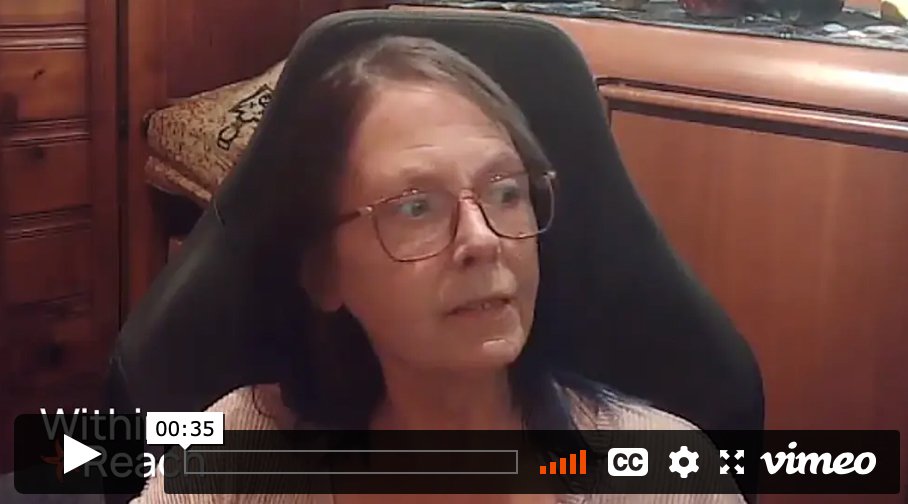
Ms. Skinner, with unilateral, below-elbow limb loss (5 years after amputation), wonders what the adjustment period for hand/arm transplant recipients is like.

Ms. Skinner, with unilateral, below-elbow limb loss (5 years after amputation), mentions the importance of talking to a hand/arm transplant recipient in her decision-making process.

Ms. Skinner, with unilateral, below-elbow limb loss (5 years after amputation), reflects on how she made decisions earlier in her life compared to now.
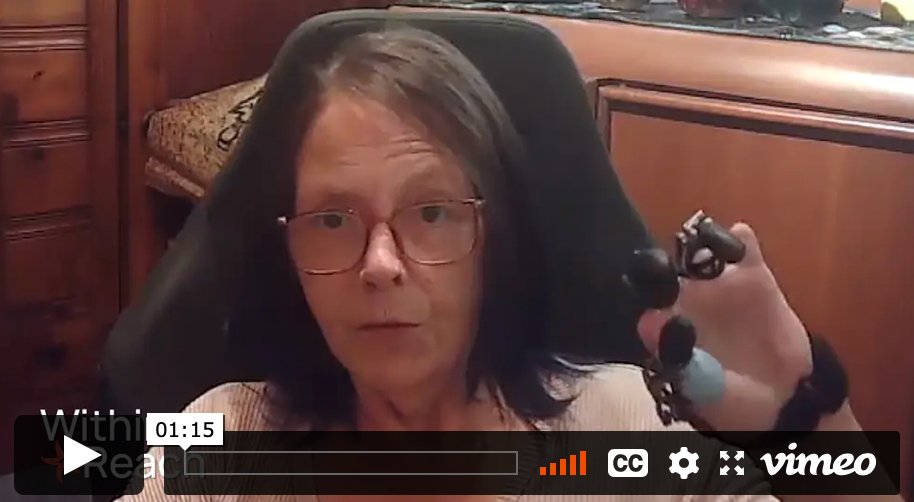
Ms. Skinner, with unilateral, below-elbow limb loss (5 years after amputation), talks about how she uses a mechanical prosthesis.
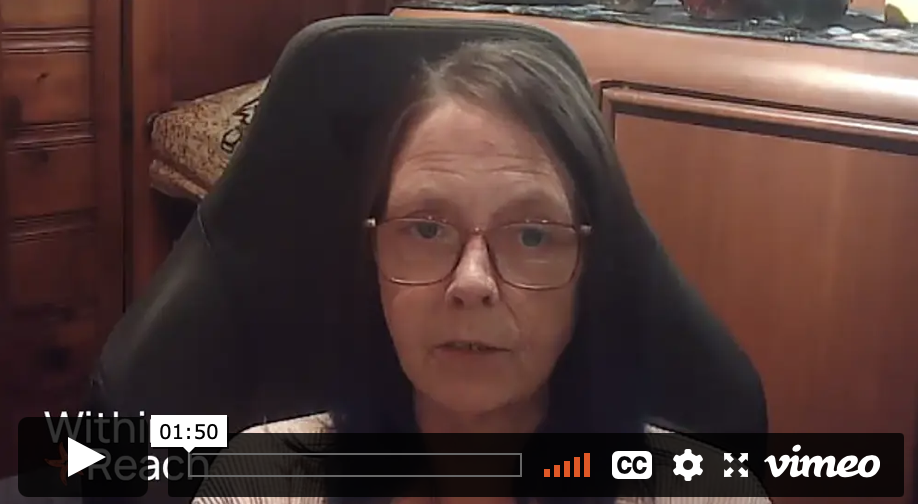
Ms. Skinner, with unilateral, below-elbow limb loss (5 years after amputation), explains her current thoughts on getting a hand/arm transplant.
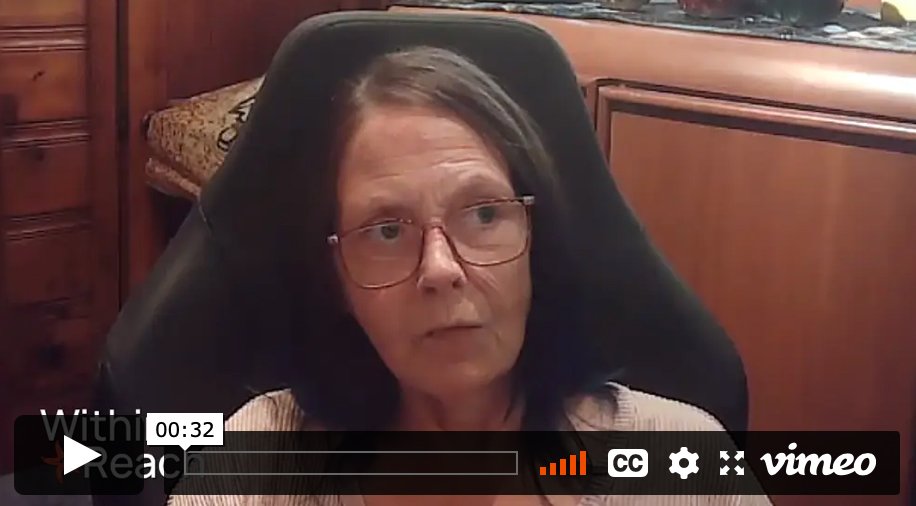
Ms. Skinner, with unilateral, below-elbow limb loss (5 years after amputation), reflects on how prostheses can be used as optional “tools”, but a hand/arm transplant is not optional once you have it.
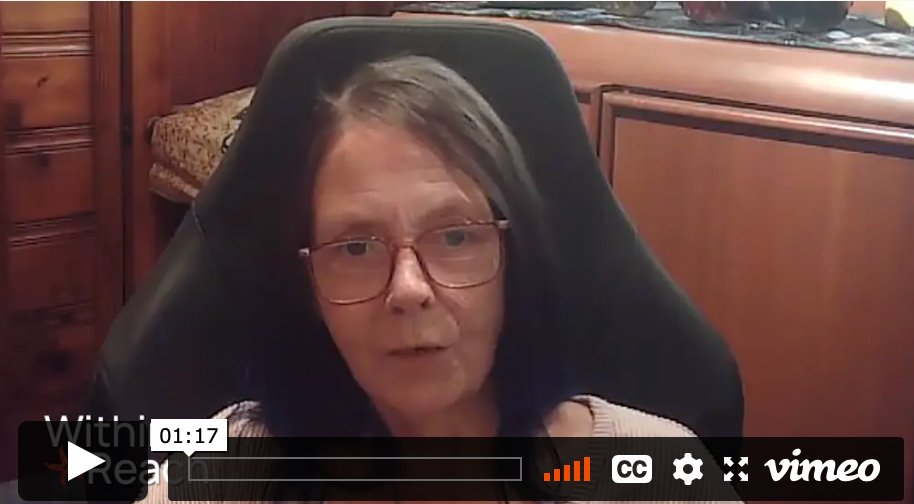
Ms. Skinner, with unilateral, below-elbow limb loss (5 years after amputation), discusses her curiosity with the hand/arm transplant recovery process and how it could impact her decision-making.
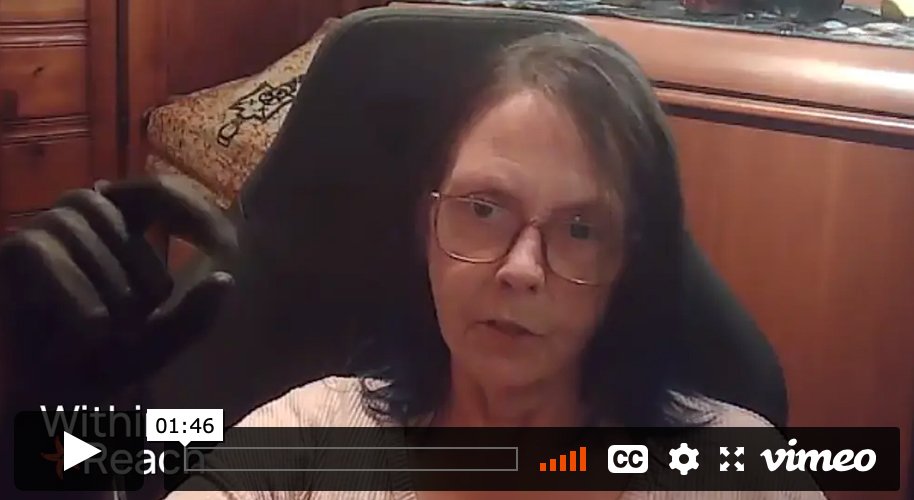
Ms. Skinner, with unilateral, below-elbow limb loss (5 years after amputation), demonstrates how she uses her myoelectric prosthesis.
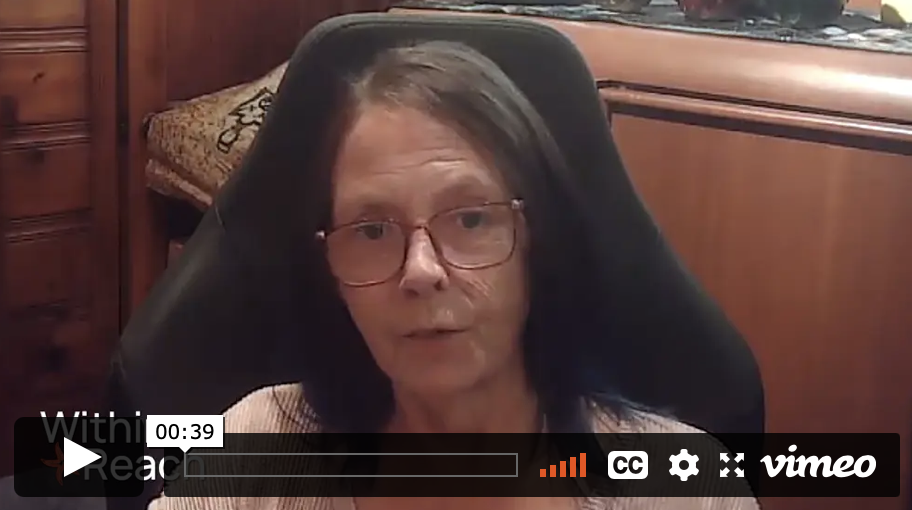
Ms. Skinner, with unilateral, below-elbow limb loss (5 years after amputation), discusses what would make a hand/arm transplant worthwhile for her.
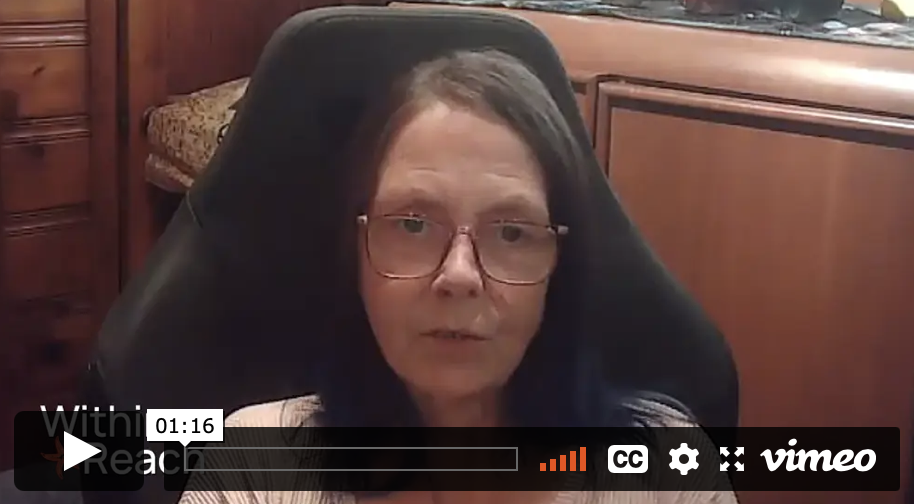
Ms. Skinner, with unilateral, below-elbow limb loss (5 years after amputation), discusses her thoughts on how a person’s sense of identity might change after hand/arm transplantation.
Mike St. Onge (Upper Limb Loss)
Mr. St. Onge, with bilateral, below-elbow limb loss (21 years after amputation), describes the importance of hands, and what hand/arm transplantation might provide physically and psychologically.

Mr. St. Onge, with bilateral, below-elbow limb loss (21 years after amputation), describes his perspective on getting a hand/arm transplant for himself.

Mr. St. Onge, with bilateral, below-elbow limb loss (21 years after amputation), explains how begin close to where you receive care is an important factor in decision-making for hand/arm transplantation.

Mr. St. Onge, with bilateral, below-elbow limb loss (21 years after amputation), talks about his experiences with different prosthetics.
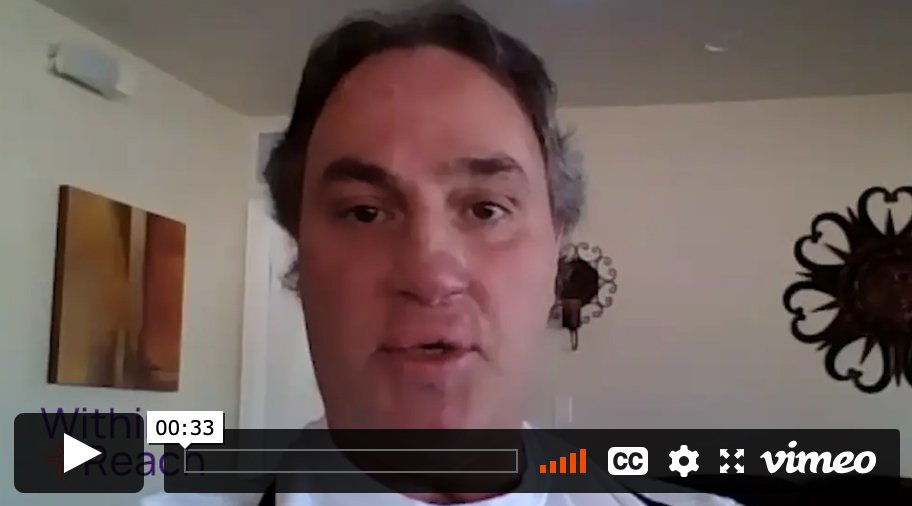
Mr. St. Onge, with bilateral, below-elbow limb loss (21 years after amputation), talks about the importance of exploring all options when considering a hand/arm transplant.
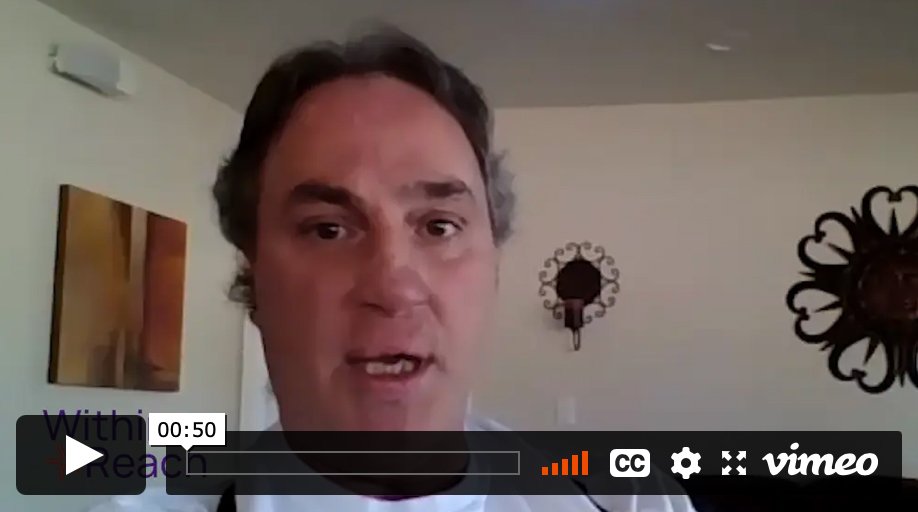
Mr. St. Onge, with bilateral, below-elbow limb loss (21 years after amputation), gives his thoughts about the long-term commitments for hand/arm transplantation.
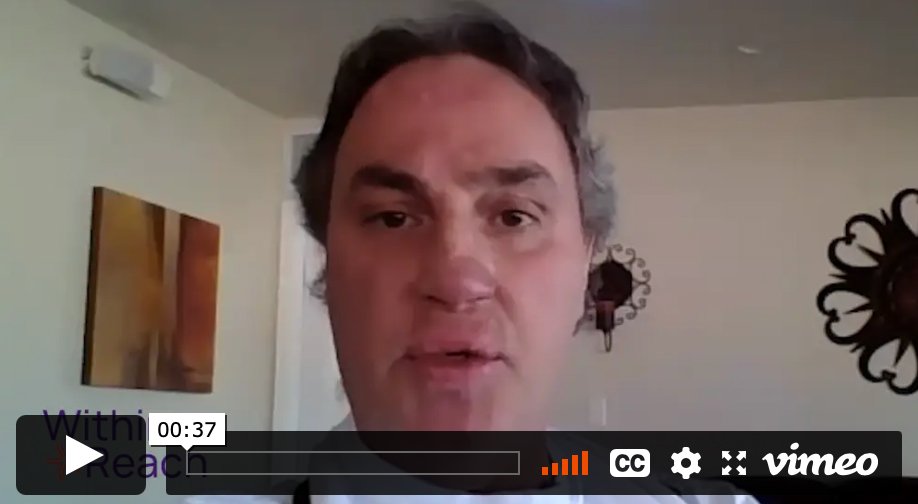
Mr. St. Onge, with bilateral, below-elbow limb loss (21 years after amputation), explains his concerns about personally pursuing a hand/arm transplant.
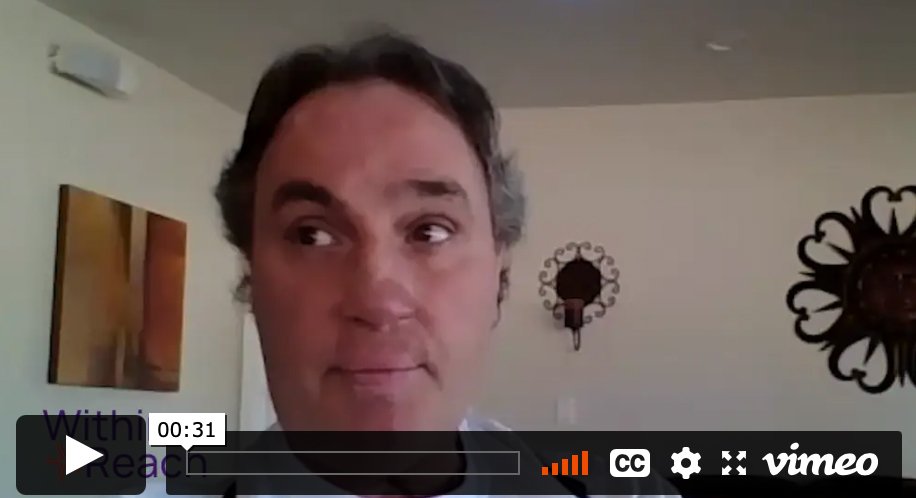
Mr. St. Onge, with bilateral, below-elbow limb loss (21 years after amputation), talks about psychological considerations when making a decision about hand/arm transplantation.

Mr. St. Onge, with bilateral, below-elbow limb loss (21 years after amputation), talks about various concerns he has about getting hand/arm transplants.
Juan Vazquez (Upper Limb Loss)
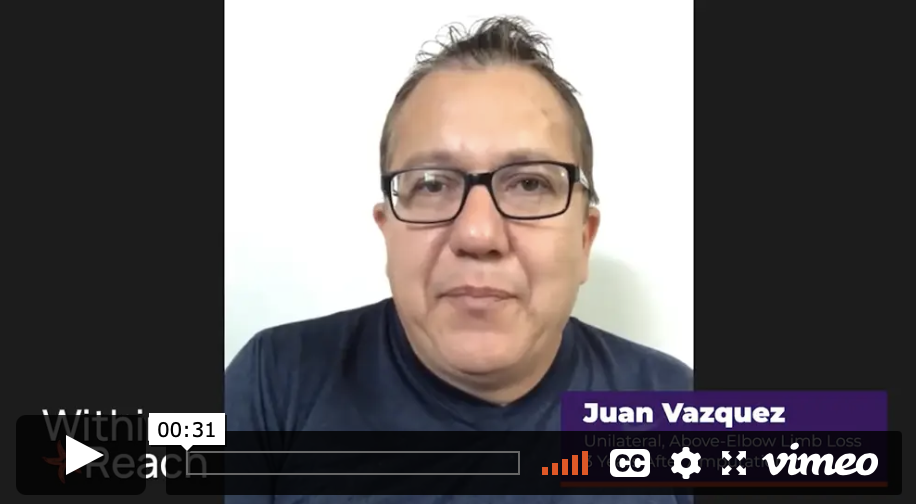
Mr. Vazquez, with unilateral, above-elbow limb loss (3 years after amputation), describes his cosmetic prosthesis.

Mr. Vazquez, with unilateral, above-elbow limb loss (3 years after amputation), discusses why he does not want a hand/arm transplant.
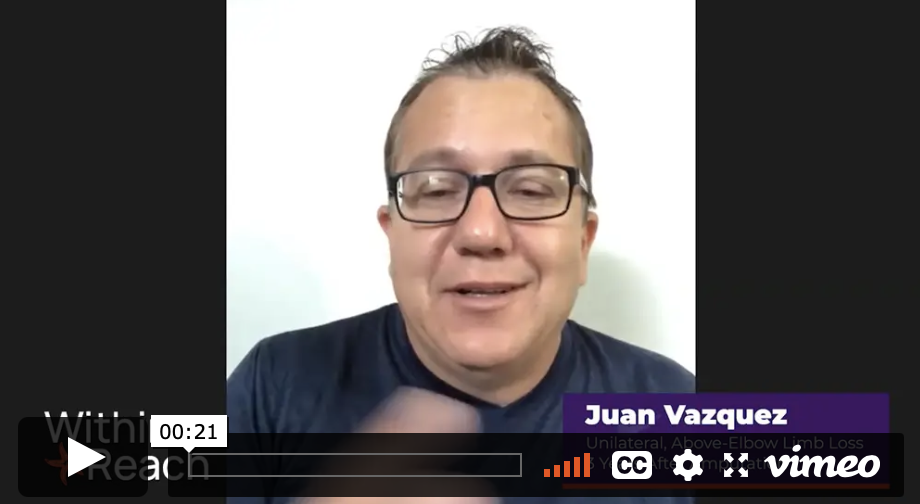
Mr. Vazquez, with unilateral, above-elbow limb loss (3 years after amputation), talks about the benefits of his myoelectric prosthesis.
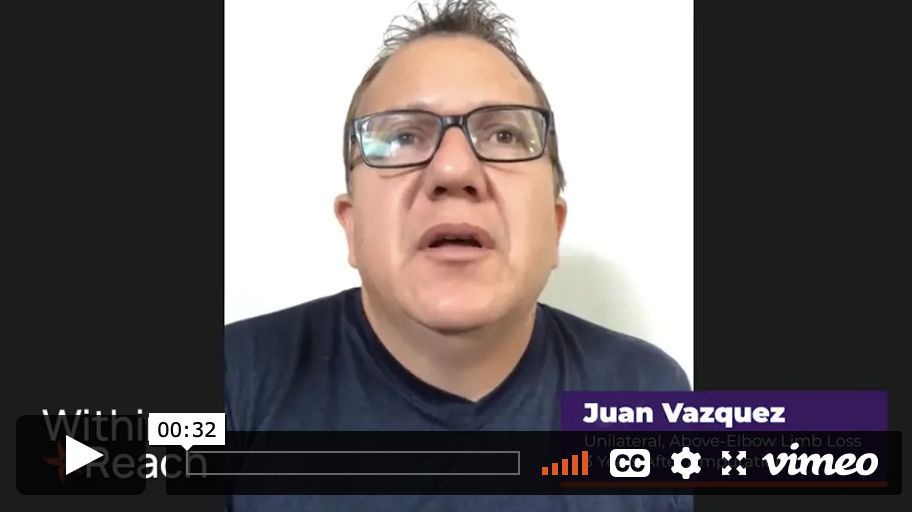
Mr. Vazquez, with unilateral, above-elbow limb loss (3 years after amputation), talks about his concerns about hand/arm transplantation.

Mr. Vazquez, with unilateral, above-elbow limb loss (3 years post amputation), talks about not using a prosthesis.
Terrance White (Upper Limb Loss)

Mr. White, with unilateral, below-elbow limb loss (6 years after amputation), describes learning about hand/arm transplants and beginning his transplant evaluation process.

Mr. White, with unilateral, below-elbow limb loss (6 years after amputation) talks about annual tests for hand/arm transplant candidates.
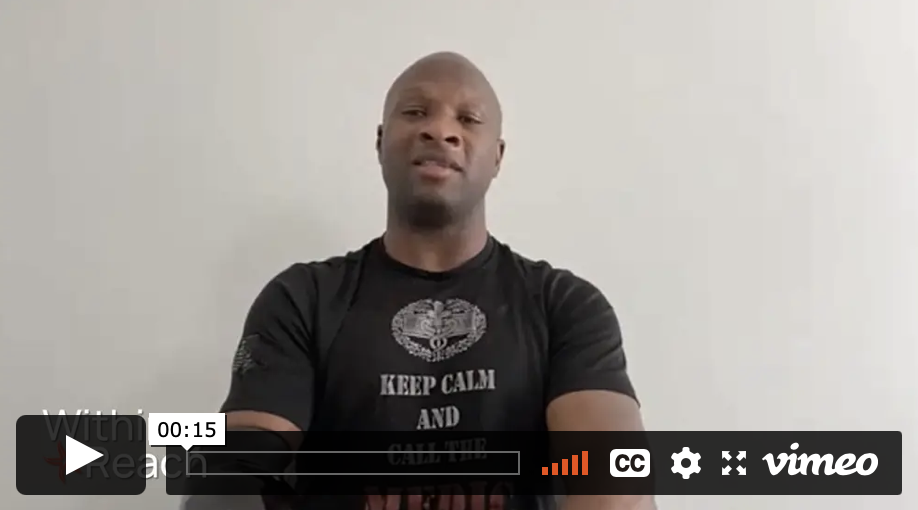
Mr. White, with unilateral, below-elbow limb loss (6 years after amputation), talks about his voluntariness to get a hand/arm transplant.

Mr. White, with unilateral, below-elbow limb loss (6 years after amputation), talks about the benefits and functions he wants to regain after receiving a hand/arm transplant.

Mr. White, with unilateral, below-elbow limb loss (6 years after amputation), talks about his experience waiting for a hand/arm transplant and the matching process.
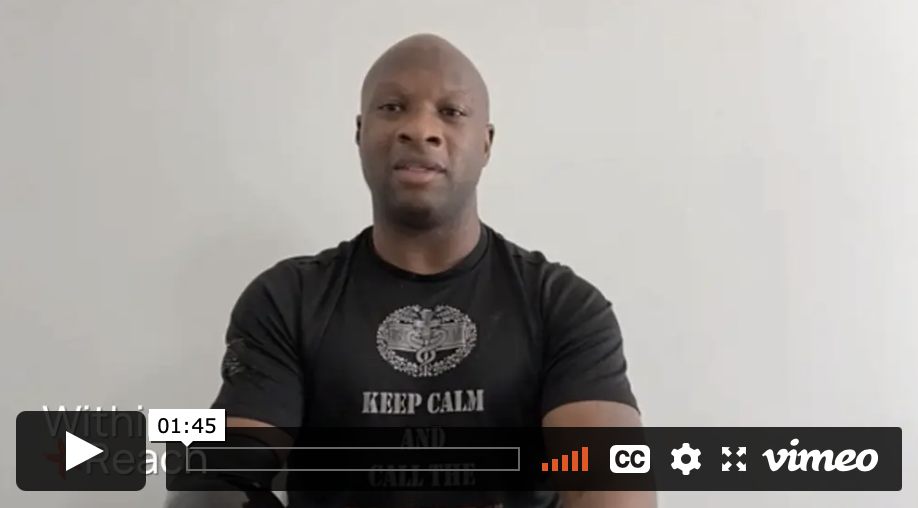
Mr. White, with unilateral, below-elbow limb loss (6 years after amputation), explains his process for preparing for a hand/arm transplant.
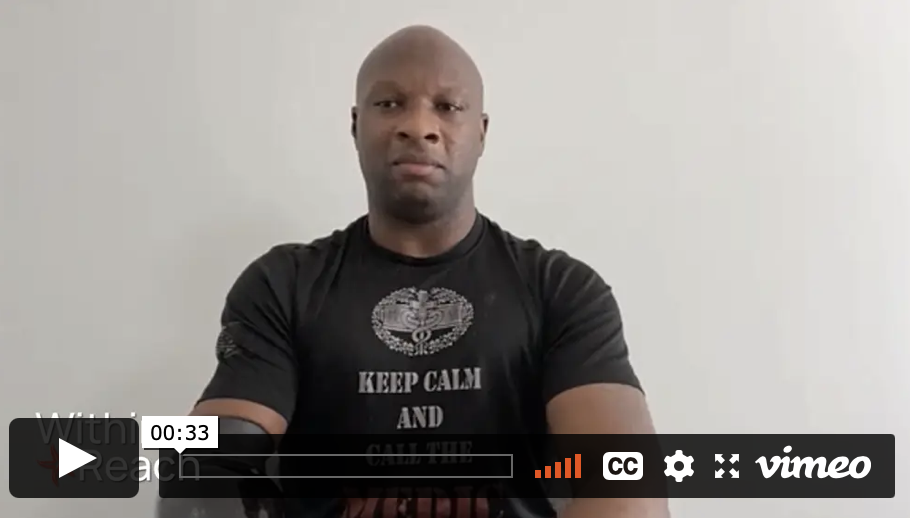
Mr. White, with unilateral, below-elbow limb loss (6 years after amputation), talks about his fear of transplant rejection.

Mr. White, with unilateral, below-elbow limb loss (6 years after amputation), talks about why he wants to get a hand/arm transplant.

Mr. White, with unilateral, below-elbow limb loss (6 years after amputation), talks about his current prosthetic use and what he hopes to gain from hand/arm transplantation.

Mr. White, with unilateral, below-elbow limb loss (6 years after amputation), reflects on the transplant evaluation process and how he spoke with multiple experts.
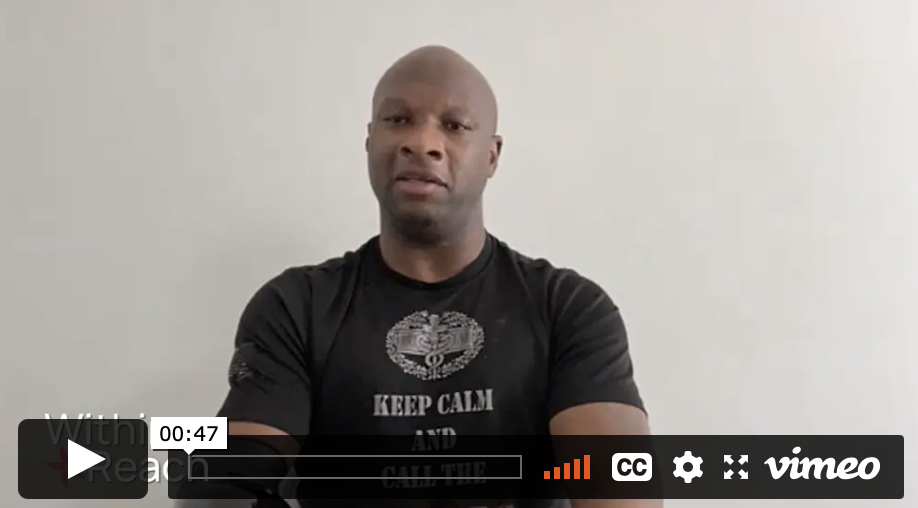
Mr. White, with unilateral, below-elbow limb loss (6 years after amputation), talks about questions he has had about the hand/arm transplant healing process.
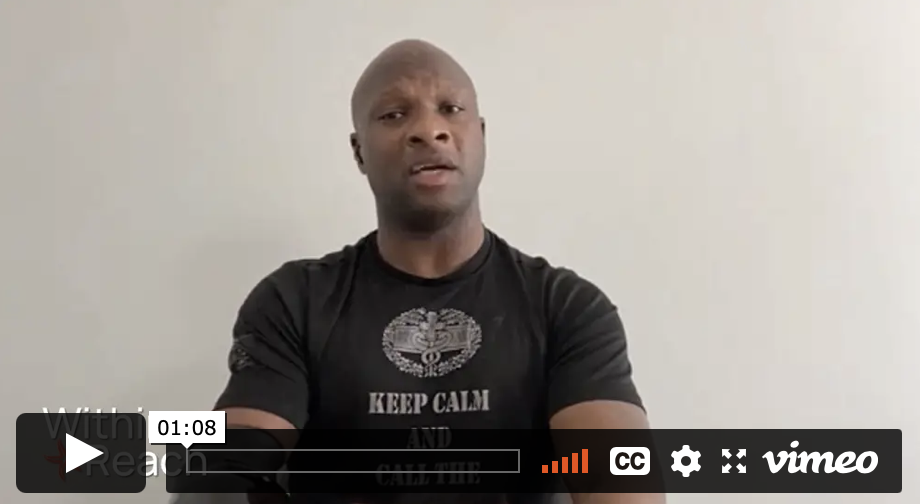
Mr. White, with unilateral, below-elbow limb loss (6 years after amputation), explains why he decided to pursue hand/arm transplant.

Mr. White, with unilateral, below-elbow limb loss (6 years after amputation), describes the kind of mindset he has had while dealing with upper limb loss.
